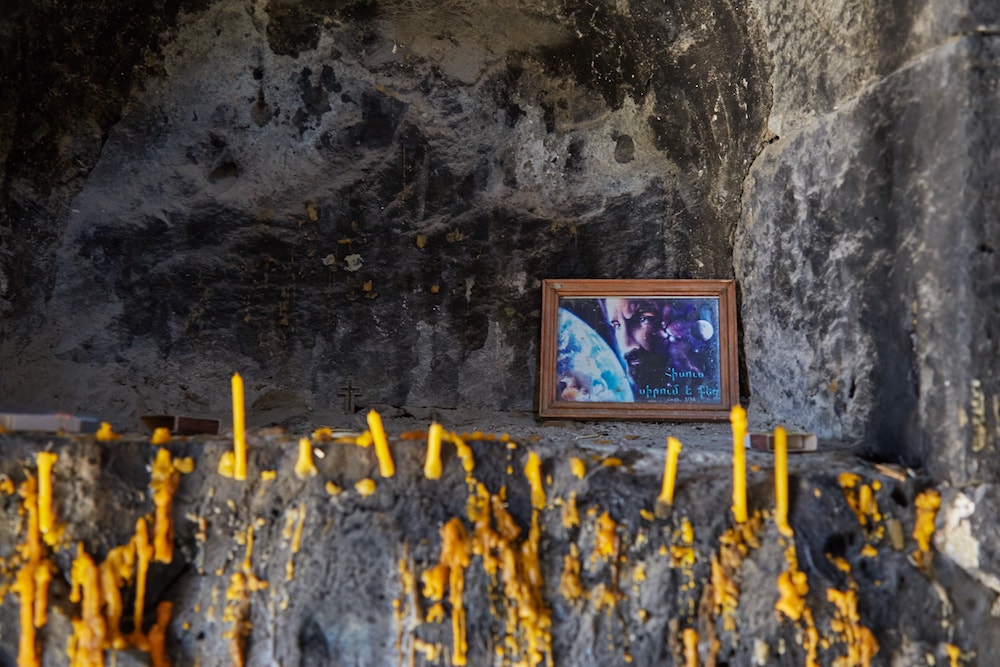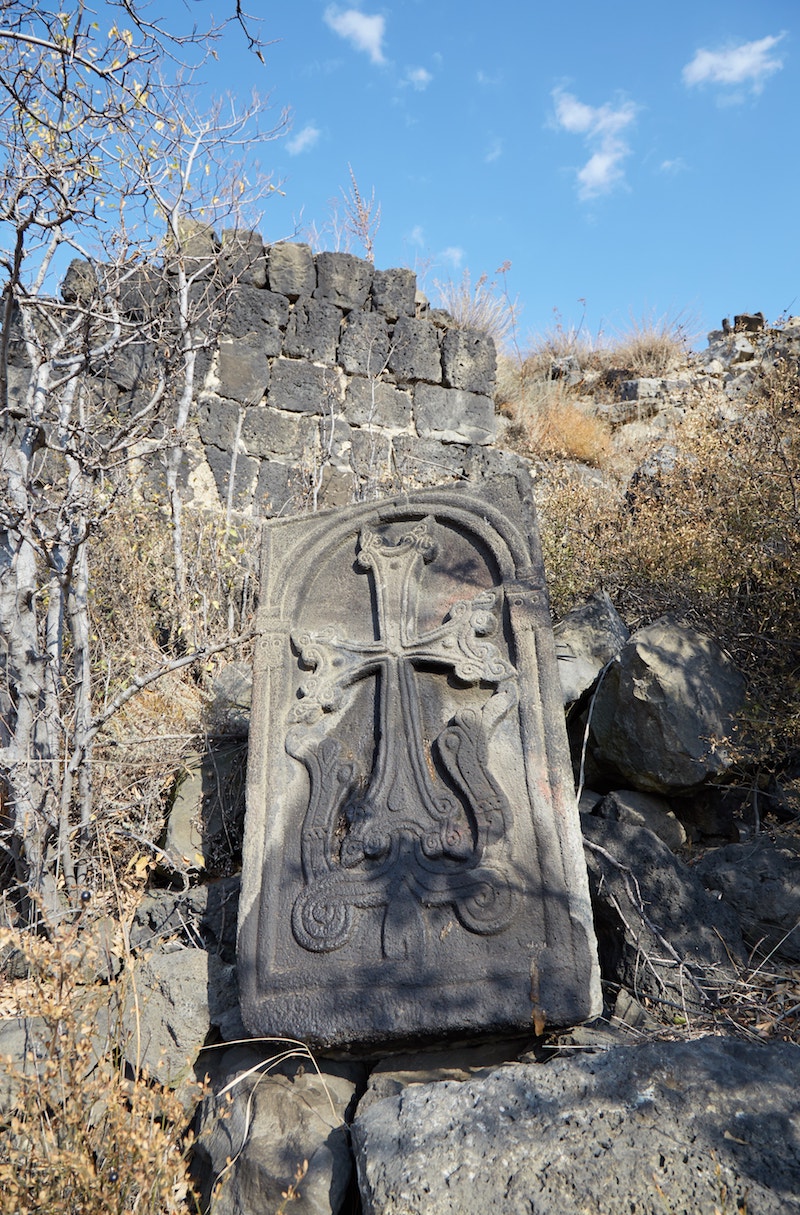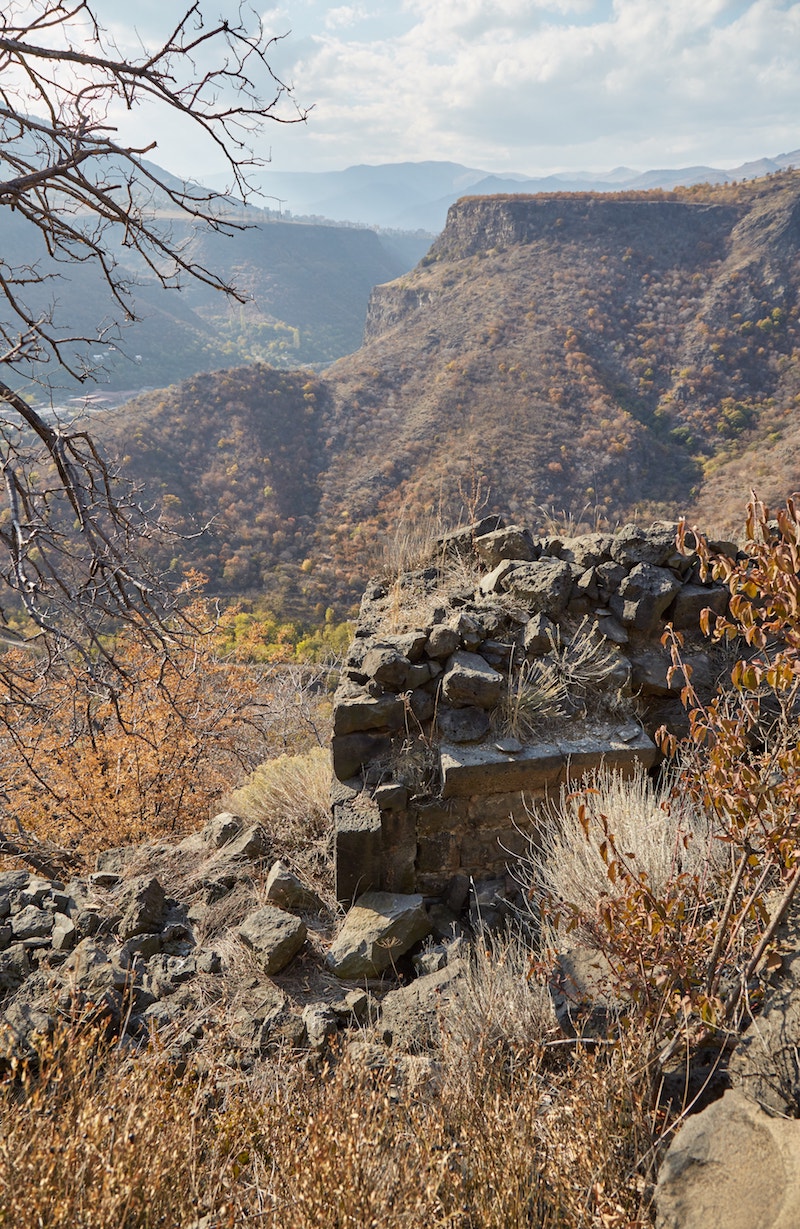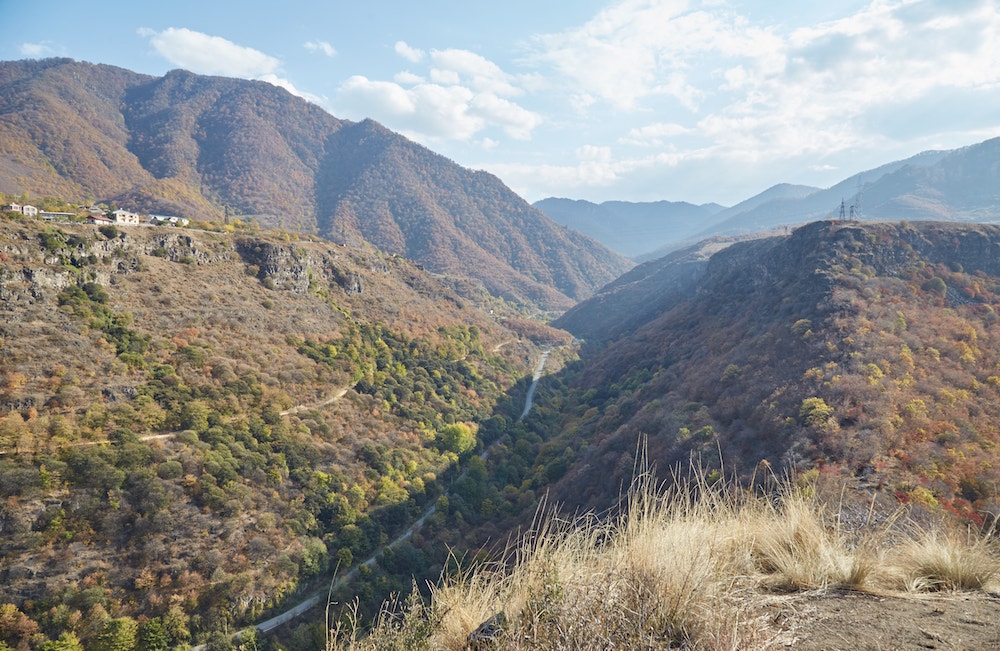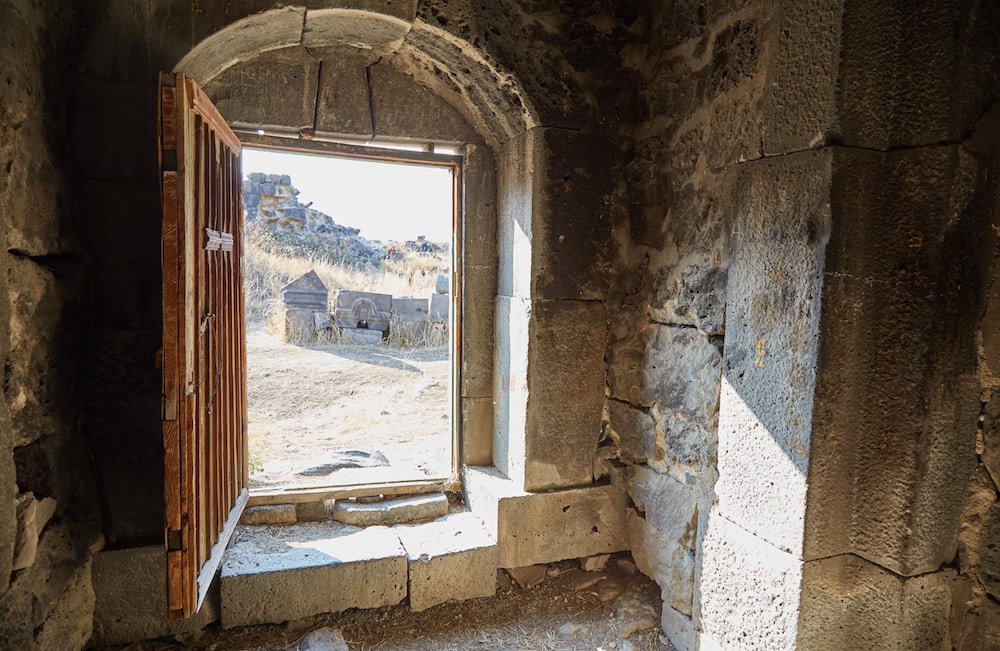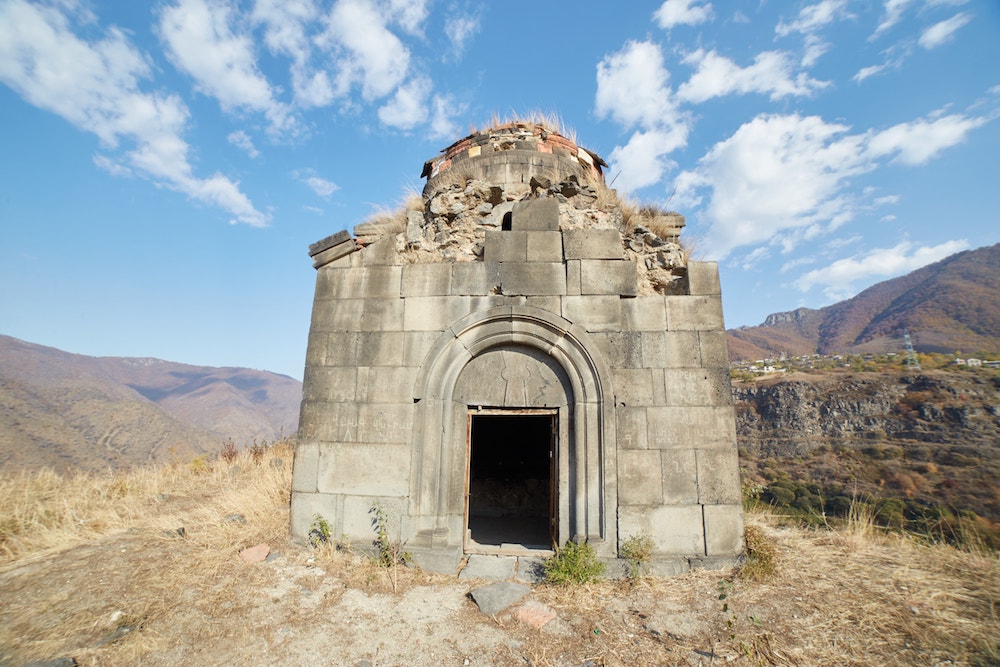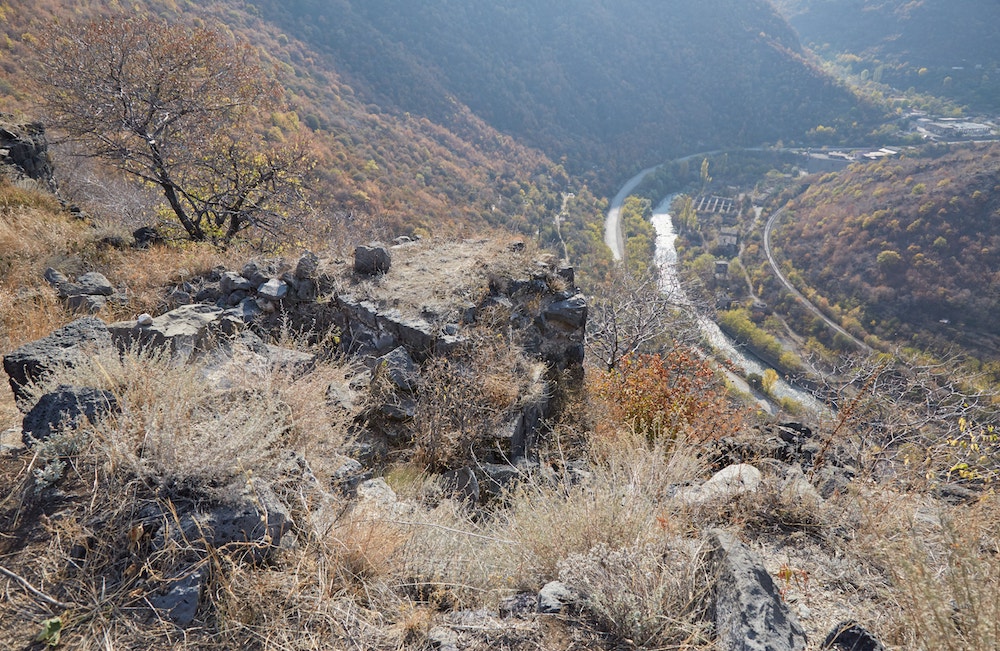Last Updated on: 24th January 2025, 09:51 pm
Hiking from Sanahin to Haghpat monasteries is one of northern Armenia’s most popular day treks. I set off on a crisp, clear autumn day and was surprised to find myself alone for the whole journey. Except, of course, at the UNESCO World Heritage sites themselves, which are increasingly gaining in popularity.
Sanahin and Haghpat monasteries are regular stops on group tours, with numerous visitors coming from as far as Yerevan. But frankly, Sanahin and Haghpat couldn’t compete with other monasteries I’d seen in Armenia, including nearby Akhtala.
But that didn’t matter. The real highlight was the journey itself. And it can also be complemented by a slight detour to the scenic Kayan Fortress, which offers some of the Alaverdi region’s most amazing views.
In this guide, I’ll be going over the route I took from Sanahin to Haghpat, which is overall a fairly easy and straightforward hike. But by adding in a visit to the Mikoyan Brothers Museum and Kayan Fortress, hiking from Sanahin to Haghpat is a full-day excursion. Be careful to make it to Haghpat before the final 17:00 minibus into town!
I highly recommend checking out the GPS trail map on the Hike Armenia app to accompany you. The guide below will cover that basic route, while also providing plenty of pictures and other additional details.
The hike begins in Alaverdi, but understand that you’ll need to begin from the upper part of the Debed Canyon, not the town center near the river. If you’re based at the bottom, you should be able to find a minibus to take you directly up to Sanahin Village. Learn more about getting around Alaverdi and where to stay at the end of the article.
The Mikoyan Brothers Museum
What more of an unusual way to start off a nature hike between two ancient monasteries than with a Soviet fighter jet? On the way to Sanahin Monastery, I made a brief stop at the Mikoyan Brothers Museum, dedicated to two genius brothers who grew up in Sanahin Village.
Anastas was a senior diplomat who served both Stalin and Krushchev. Artem, meanwhile, designed the influential Russian MiG fighter jets – one of which is proudly displayed outside.
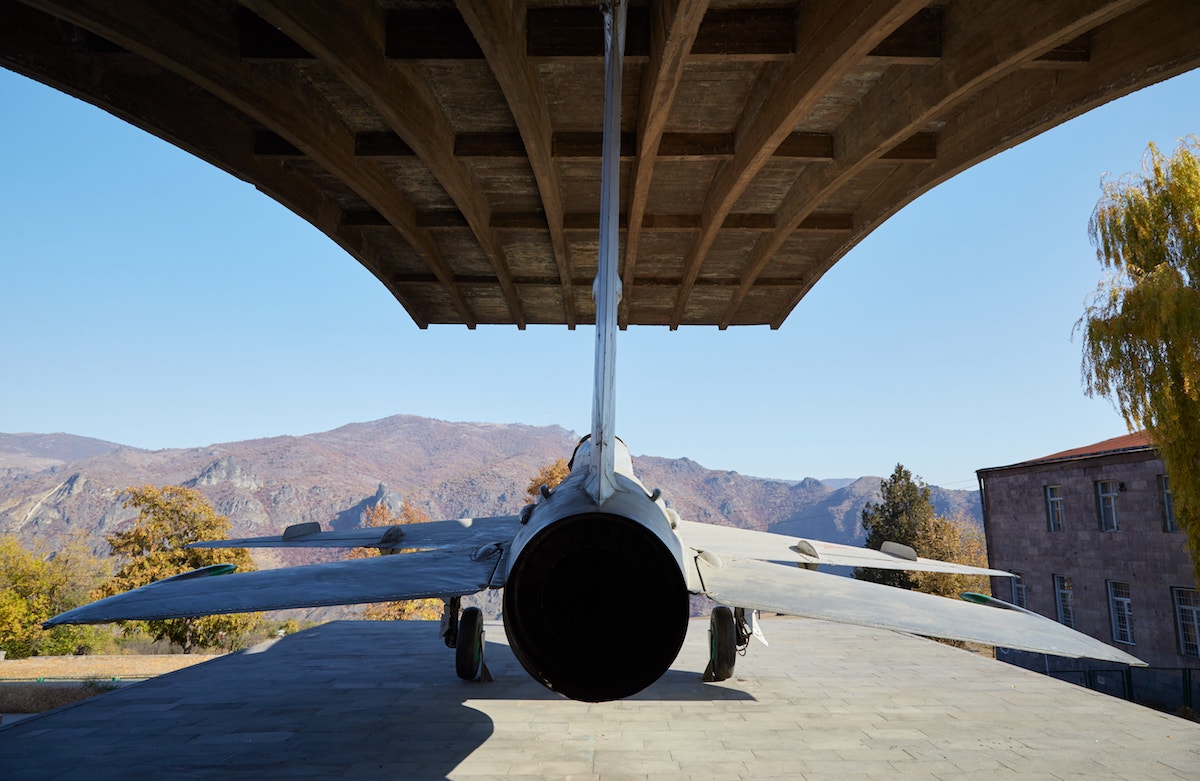
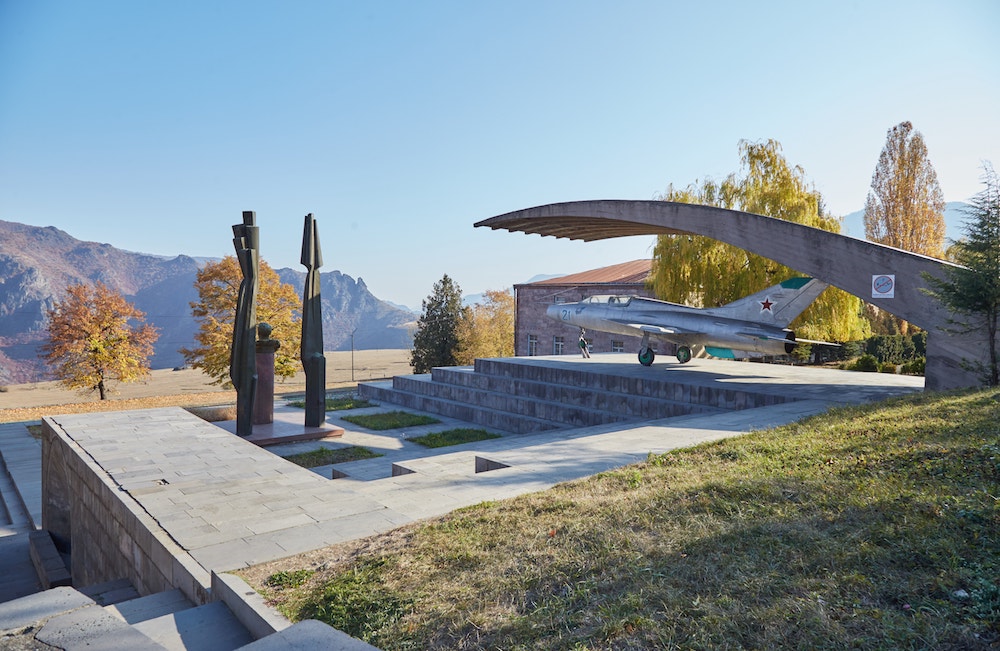
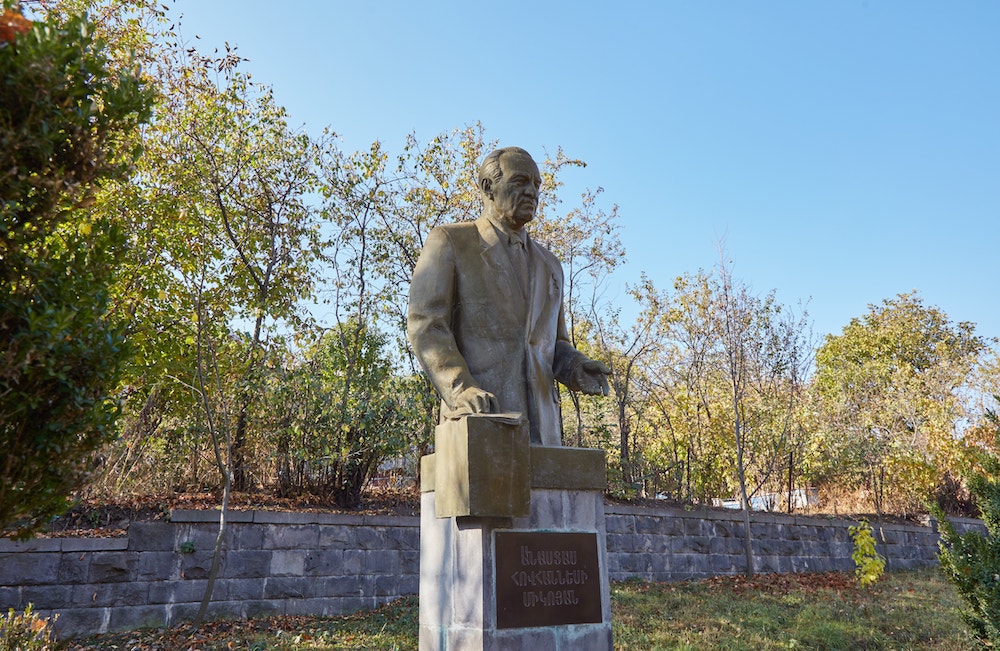
Included in the ticket price is a free English-speaking guide, but no photography is allowed inside. While the Mikoyan Brothers Museum is definitely worth visiting, it all felt very out of place within the context of hiking from Sanahin to Haghpat. So that’s all I’ll get into about it here.

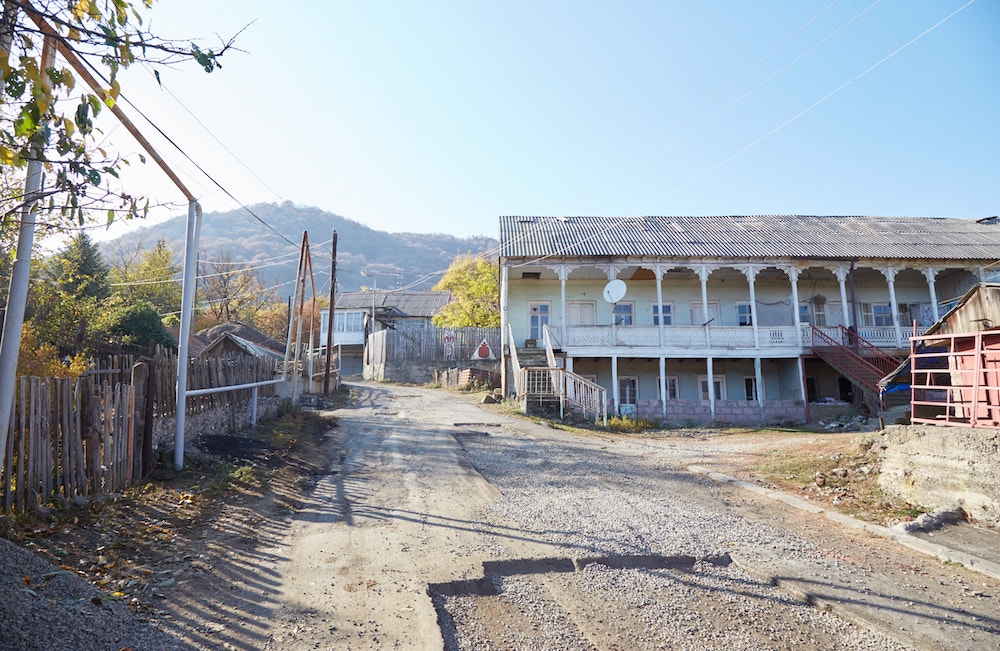
Exiting the museum, walk uphill through Sanahin Village. And before long, Sanahin Monastery should come into view.
Sanahin Monastery
Just several minutes on foot from the museum, I reached the first landmark of the day: Sanahin Monastery. As with its neighbor Haghpat, the monastery was started in the 10th century with construction continuing over the next couple hundred years.
The two monasteries, in fact, were both commissioned by Queen Khosrovanush, wife of King Ashot III. Sanahin Monastery is believed to be older by about ten years. And later on, when the two monastic communities developed a friendly rivalry, it became known as Sanahin, which means ‘this is the older one.’
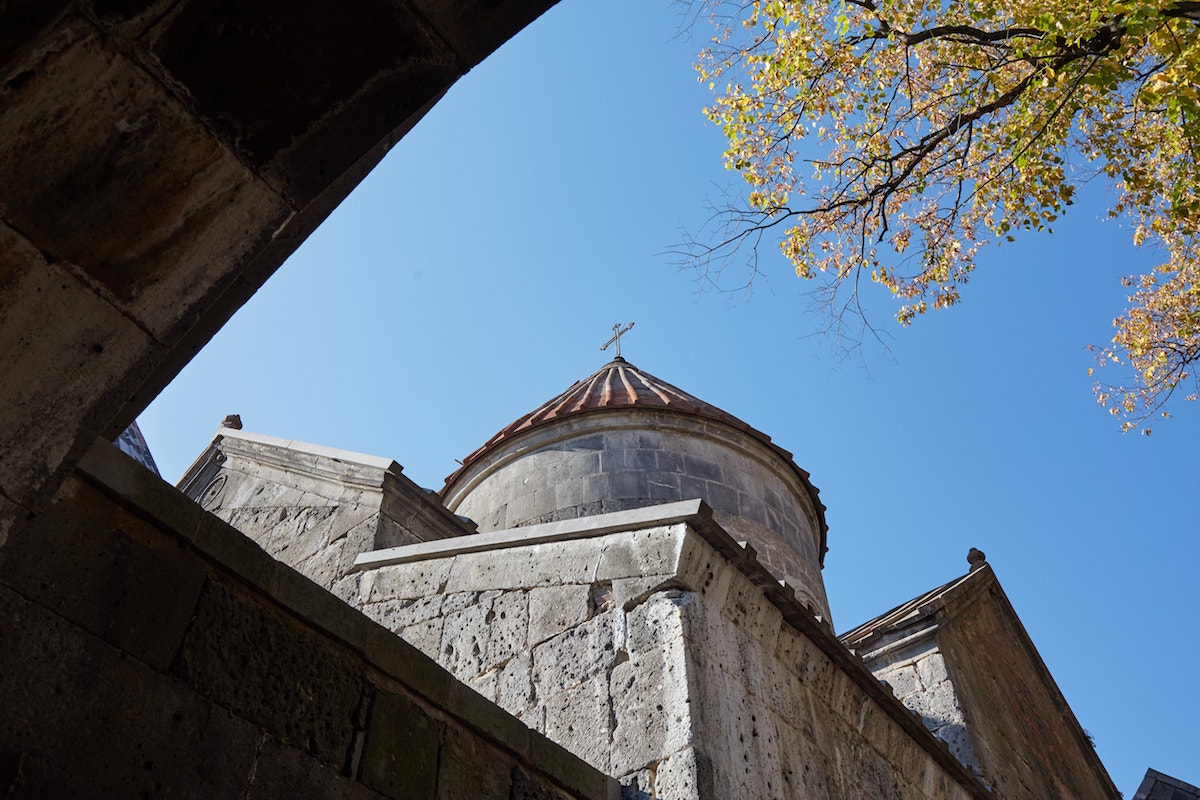
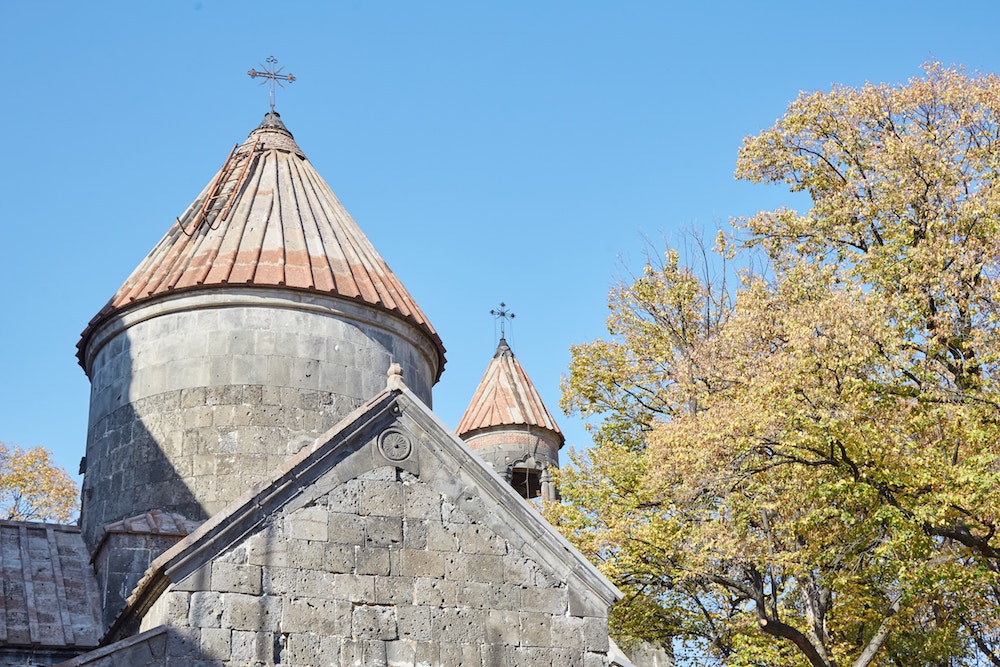

Sanahin Monastery represents a fusion of Byzantine and traditional Armenian architecture. In its day, it was regarded as an important school for calligraphers.
But despite its popularity, the complex is considerably smaller than its younger neighbor or other famous monasteries like Tatev. The monastery consists of two main churches along with several chapels and some other small structures.

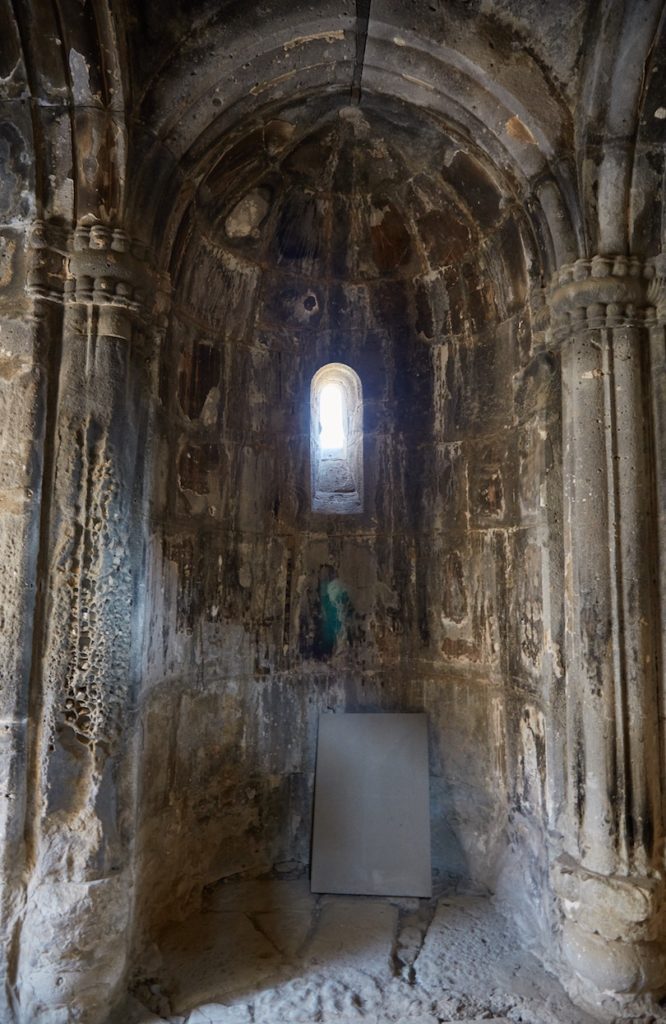

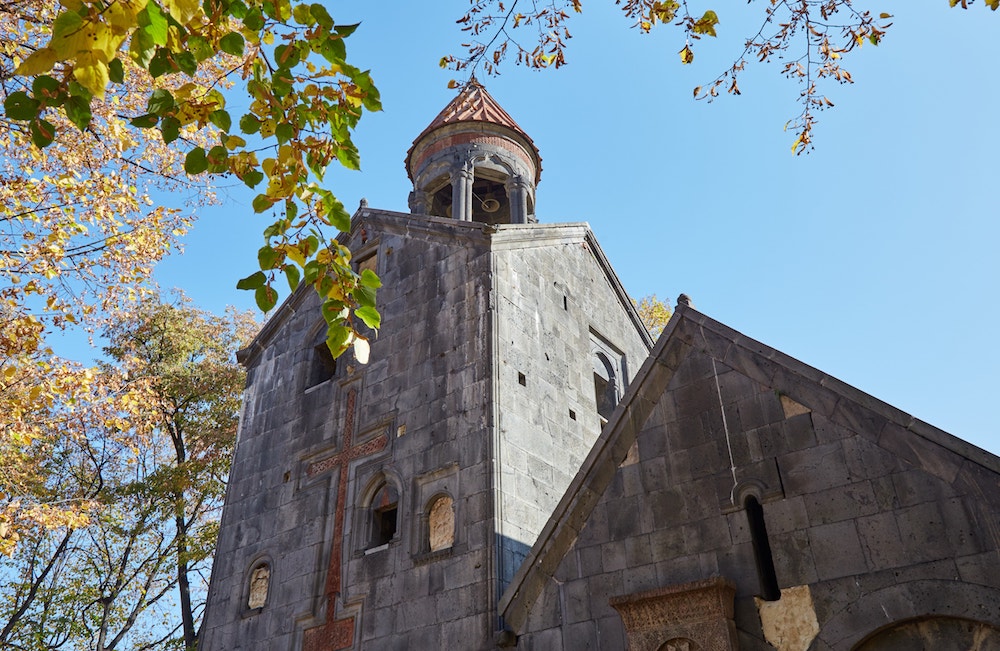
First, I walked by St. Grigor Chapel, named after Gregory the Illuminator, the saint who’s credited with Armenia’s conversion to Christianity. The structure dates back to 1061, though Gregory himself supposedly arrived at this location in the 4th century. According to legend, he left a cross here.
Considering how merciless Gregory was toward Armenia’s pre-Christian temples, it’s highly likely that a ‘pagan’ temple once existed here, giving Gregory a reason to pay a visit.

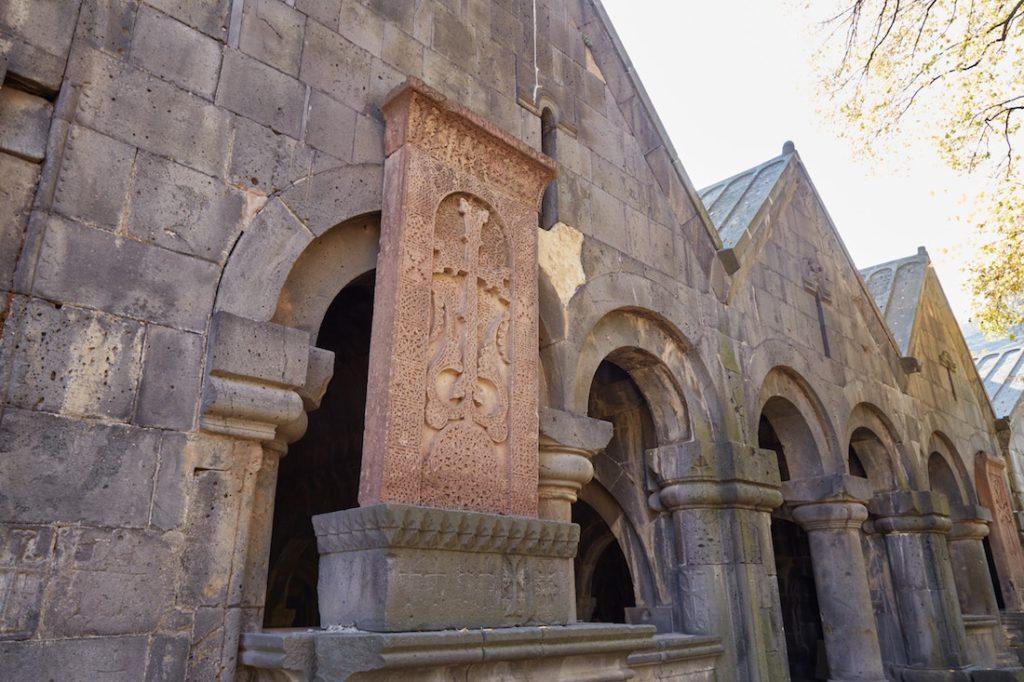
Outside the large arched gavit, you’ll notice a mesmerizing khachkar cross-stone displayed atop a pedestal. These stones, which can act as gravestones, talismans or just pretty art, can be seen everywhere in Armenia. That’s why it takes a really special crafstman to make theirs stand out, as is the case here.
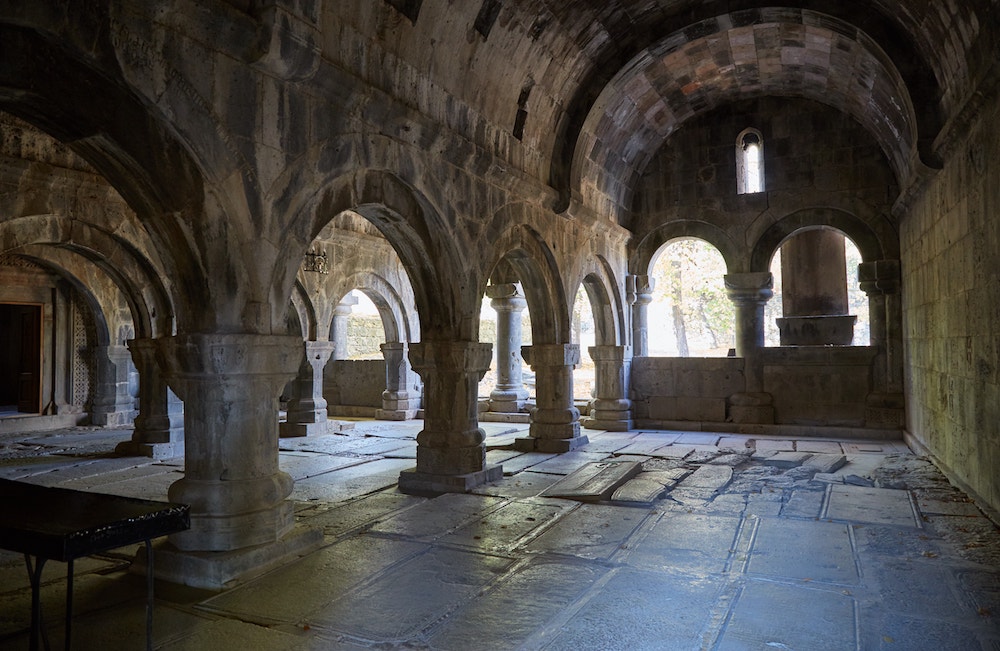

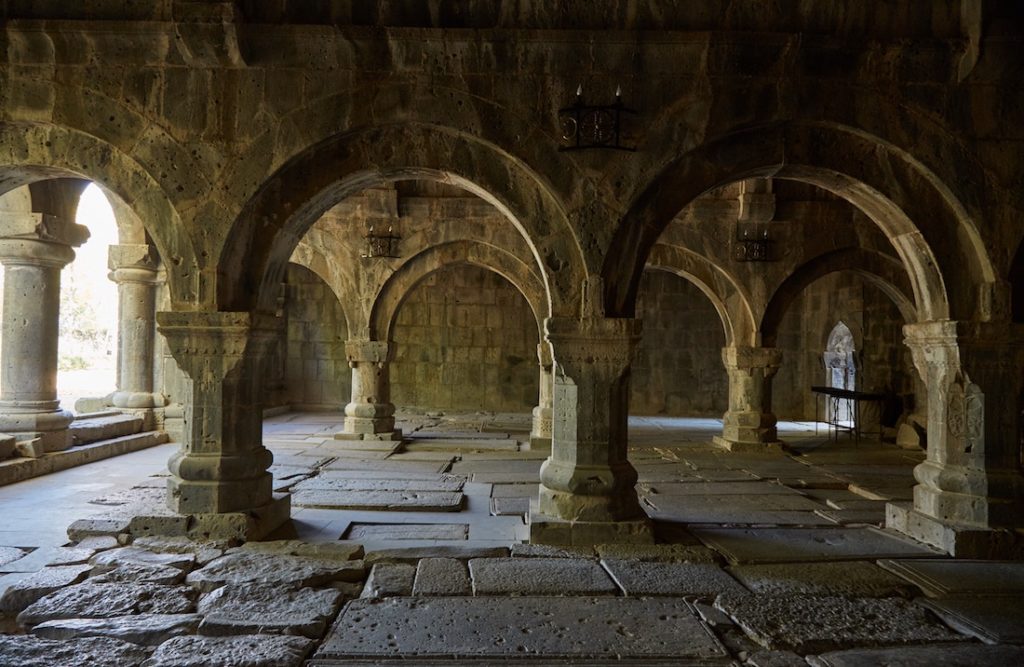
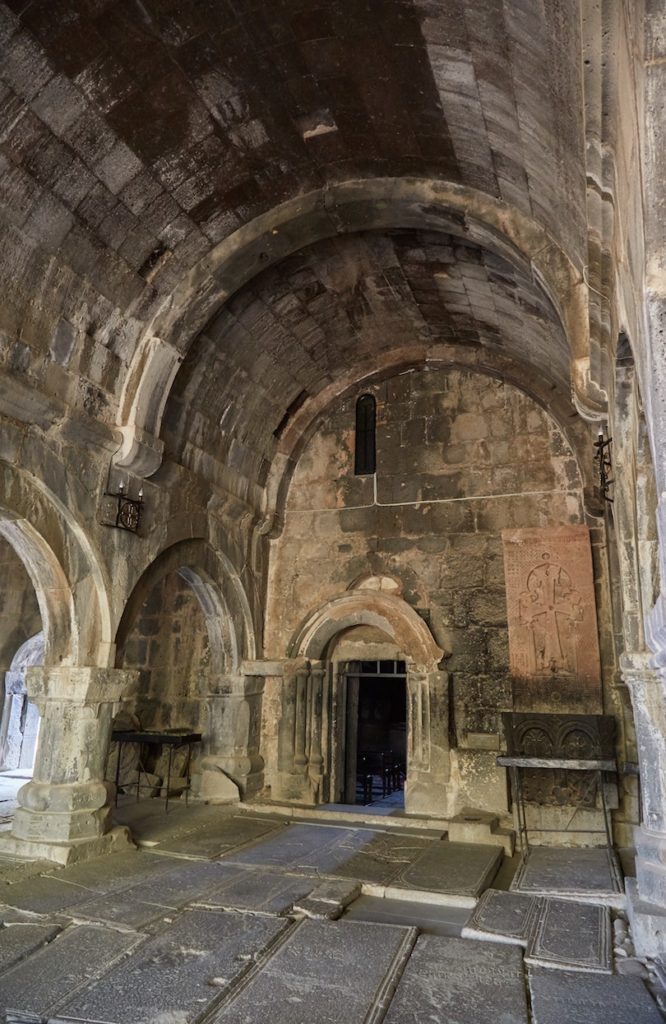
The large gavit, or narthex, which contains numerous tombs of former bishops, is one of the most interesting parts of the complex. Interestingly, the structure’s architect, Zhamhayr, is one of the few medieval architects whose name we know.
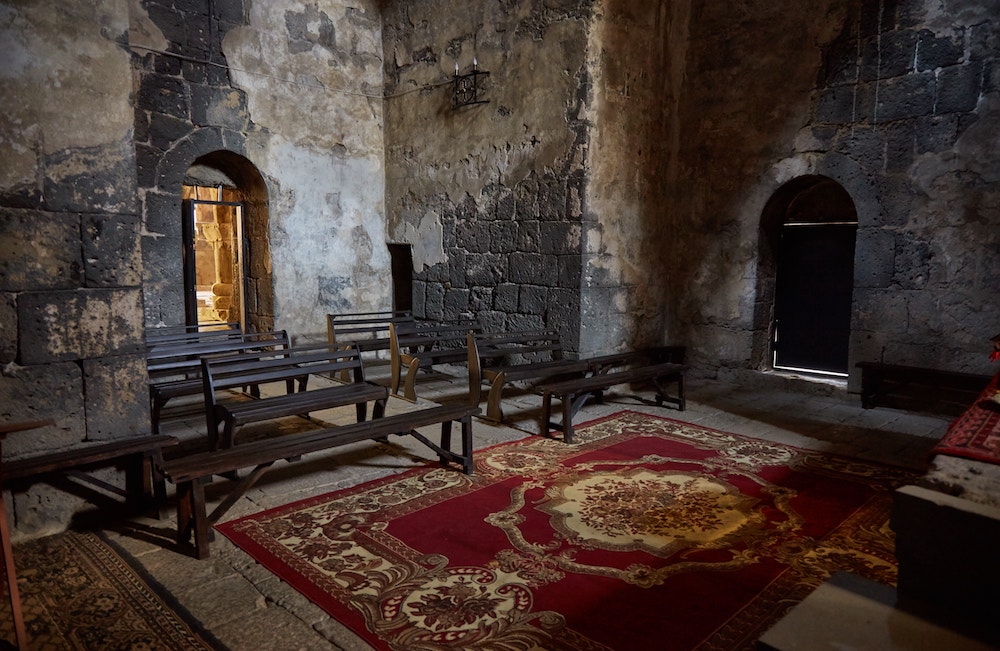
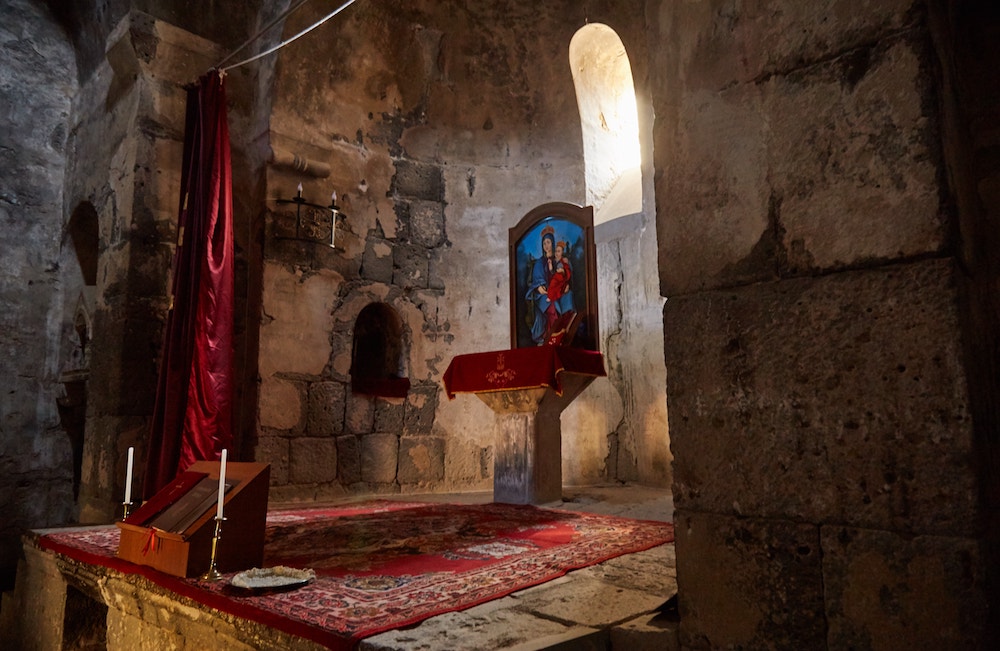

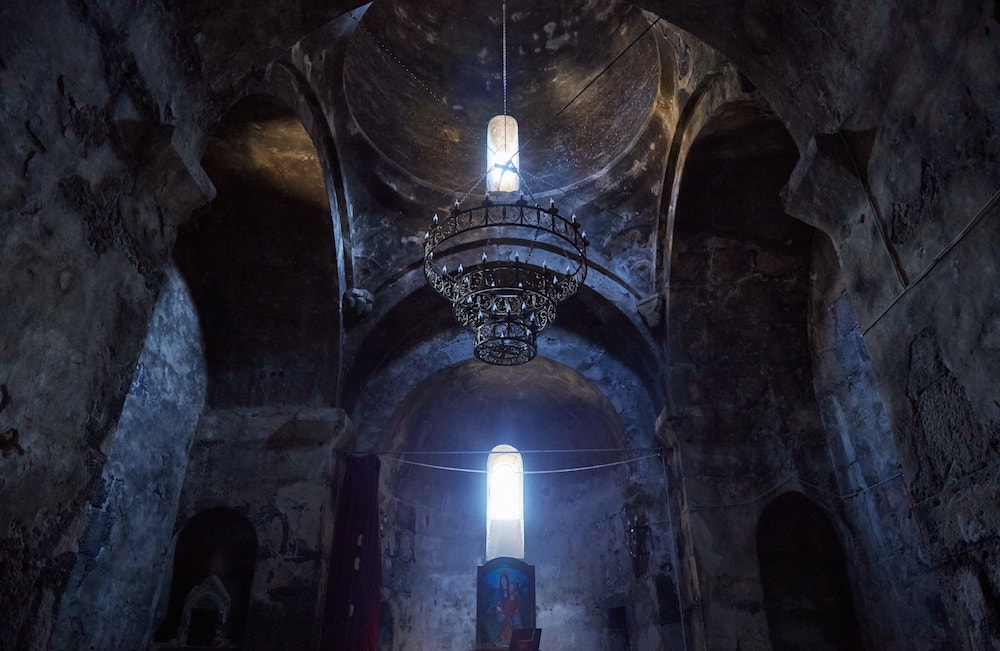
St Astvatsatsin Church, or Holy Mother of God Church, was built between 928-944. It appears to be the only structure currently in use for religious ceremonies. Architecturally, it’s a cross-shaped structure with a central dome – a common trend in Armenian church architecture.
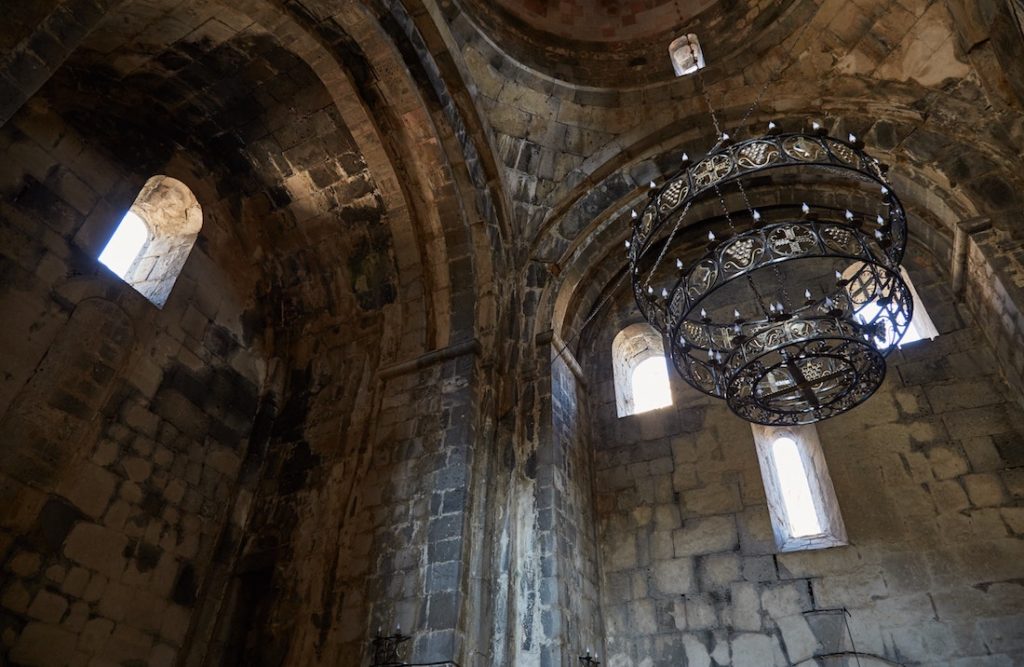
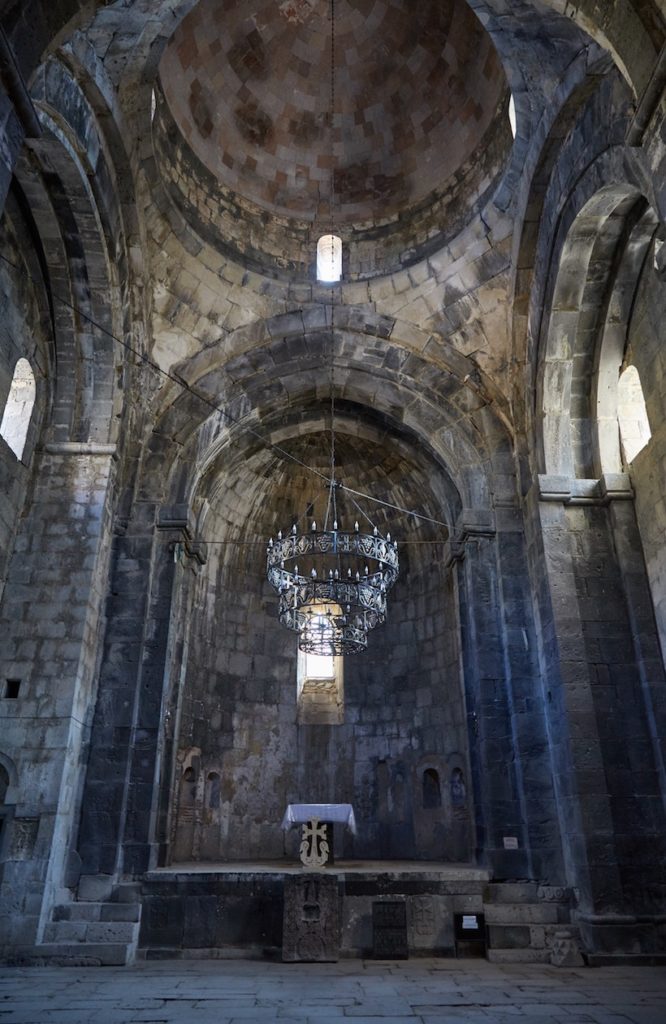
The other main structure, the Church of the Redeemer, was built between 957 and 966. This church was commissioned by Queen Khosrovanus in honor of her sons Smbat and Gurgen, two future kings of Armenia.
The tall domed structure is currently void of painted frescoes or decoration, with the exception of a few carved reliefs – only discernible if you look closely.


Also on site is the Scriptorium. Now completely empty, the manuscripts once kept here are now presumably at the Matenadaran in Yerevan. The structure was built in 1063, and you can still see niches where the books were stored.
As mentioned, Sanahin was a popular place for calligraphy, and it’s also here that manuscripts were copied and illustrated.
Hiking From Sanahin to Haghpat
Finsishing up my visit to Sanahin, it was time to start the real adventure of the day: the long hike to Haghpat Monastery, located in the village of the same name.
The hike is by far one of the most popular things to do for visitors to Alaverdi. That’s why I was a surprised to come out of Sanahin and find no signage at all.



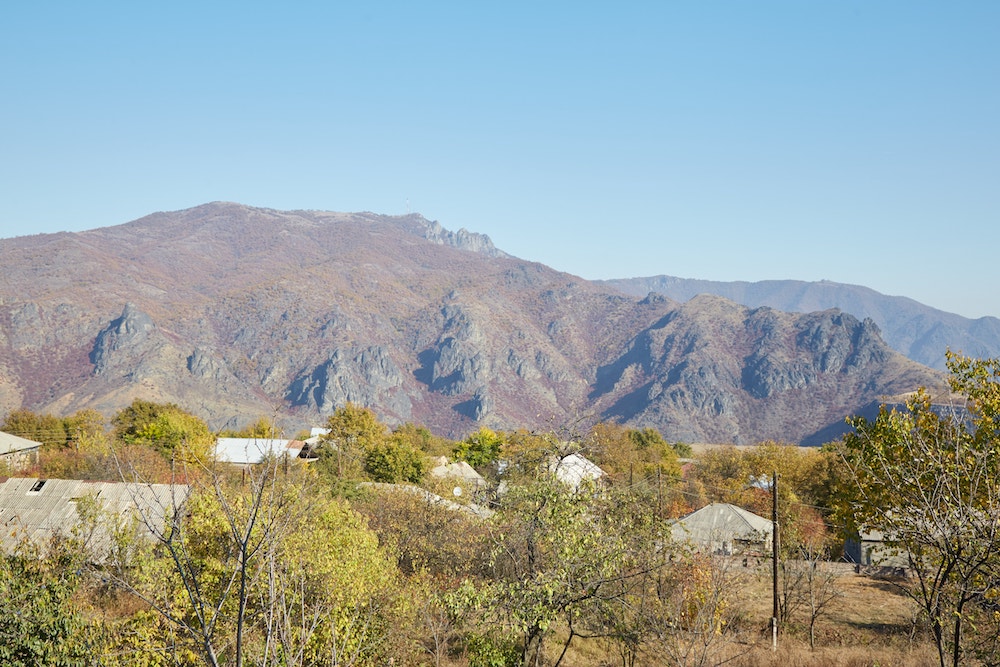
While Sanahin is a small, sleepy town, the start of the trail is far from obvious. And while I would later encounter signage along the trail, it wouldn’t be until around thirty minutes into the hike!
Thankfully, I’d done some prior research and was looking at a trail map provided by Hike Armenia. Basically, coming from Sanahin Monastery, you should head north past the kiosks selling souvenirs and snacks. Turn right at the toilet and then head east. When the road forks, take the right road and walk straight for several minutes.
When you reach the end of the village, make a right on the dirt road which overlooks the valley. Don’t take the uphill road the goes toward the houses, but the one which the curves all the way around the mountain.


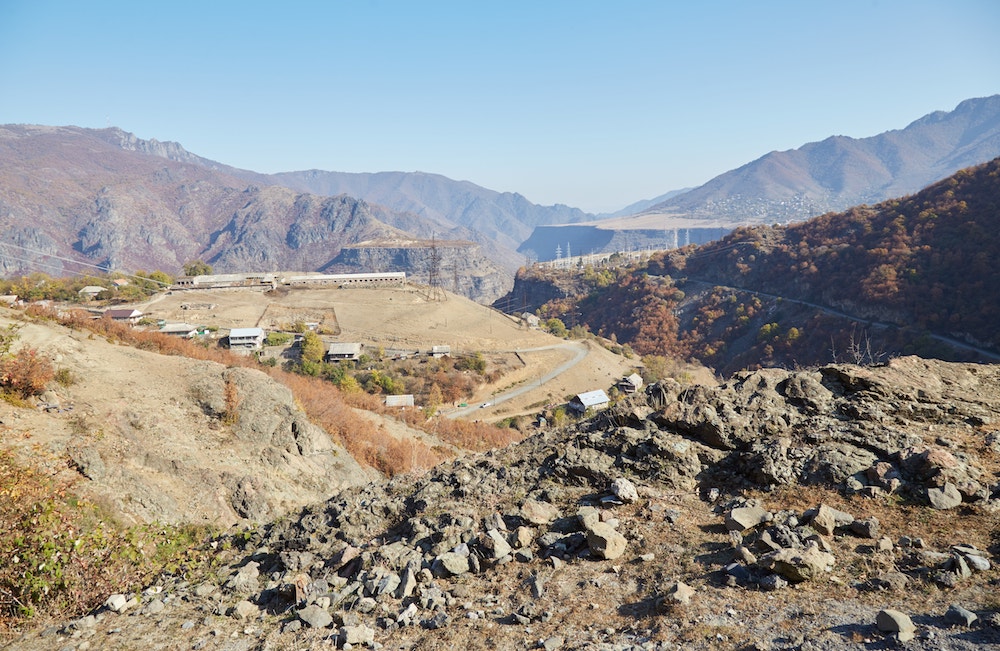

From here the route is straightforward, easy and scenic. At some points, you’ll be walking through a thick forested area, but occasional gaps in the trees reveal the breathtaking scenery down below.


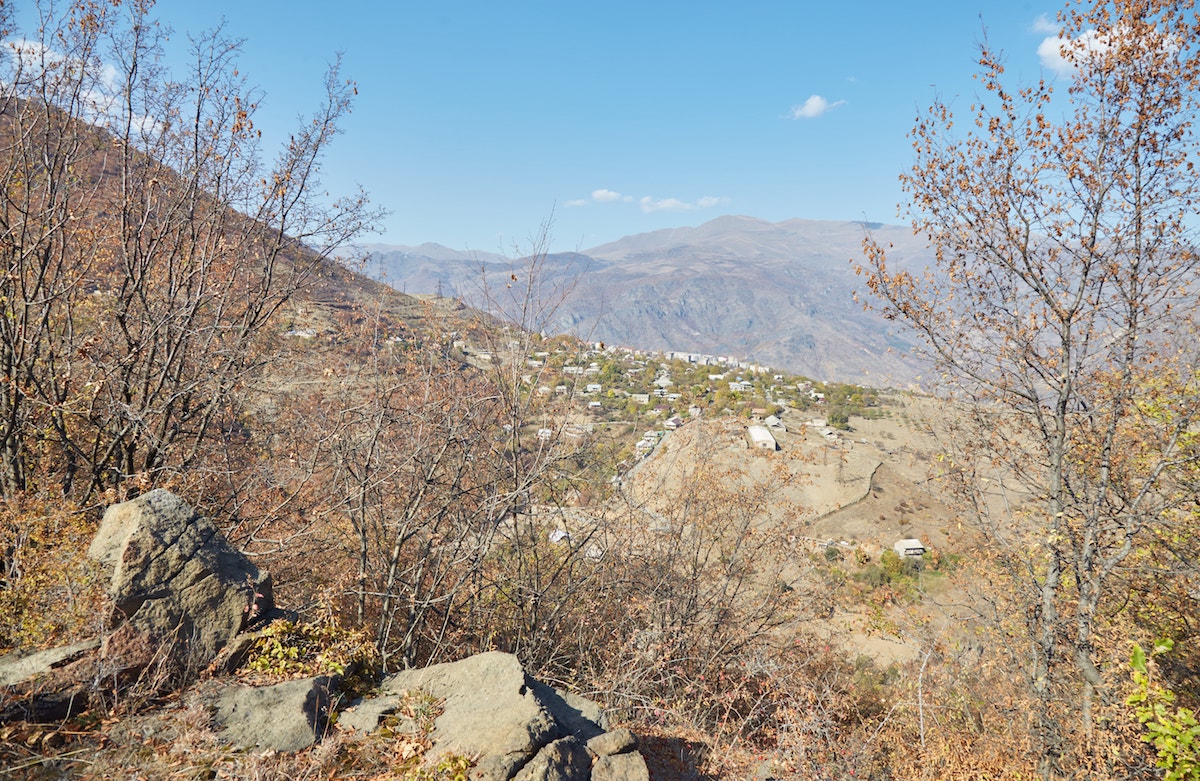

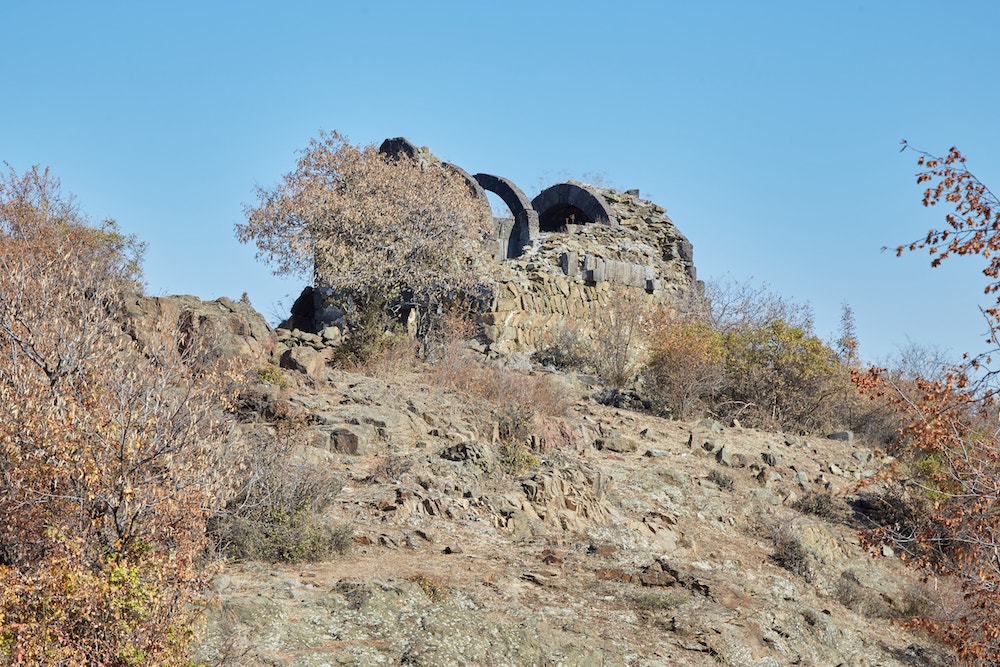
You’ll eventually be out of the forest after 30-40 minutes. And at some point you’ll notice a stone structure at the far end of the ridge. While you can skip it if you like, it makes for a fun little detour.
This is not yet Kayan Fortress (more below). But this structure, which appears to be a dilapidated church, is similar to what you’ll find there.

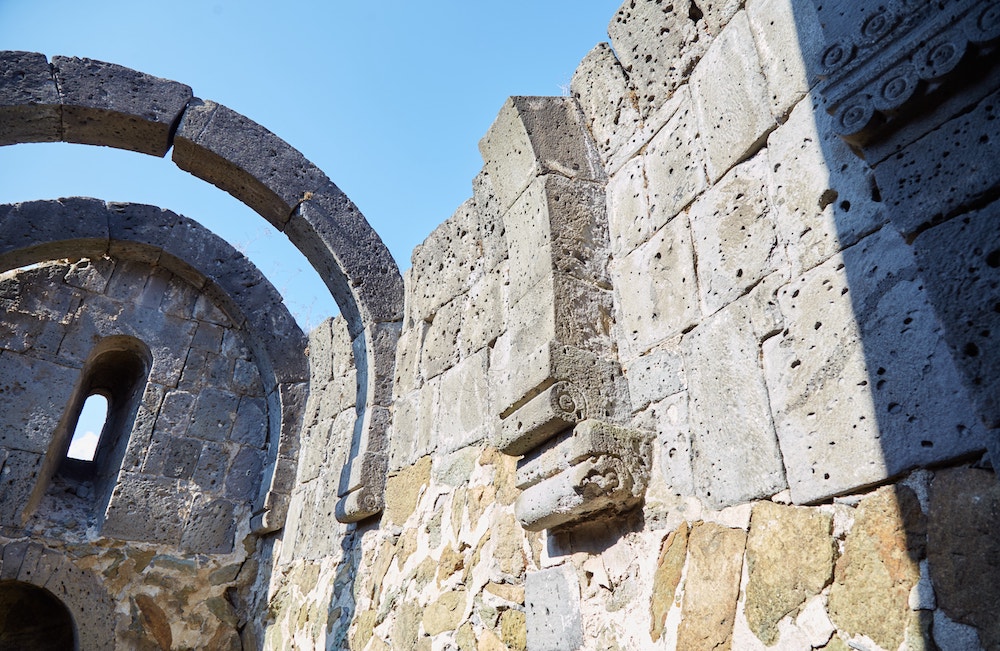
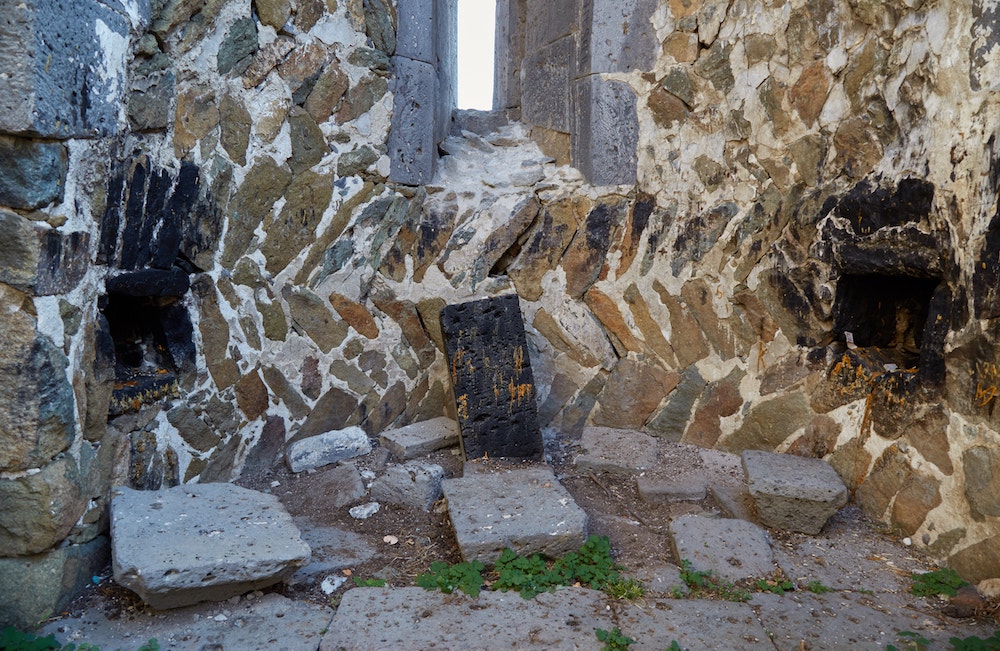
This interesting little building seems to have doubled as both a shrine and a lookout tower. And as is also the case with Kayan Fortress, it’s from here that you’ll be granted some of the most spectacular views of the entire hike.
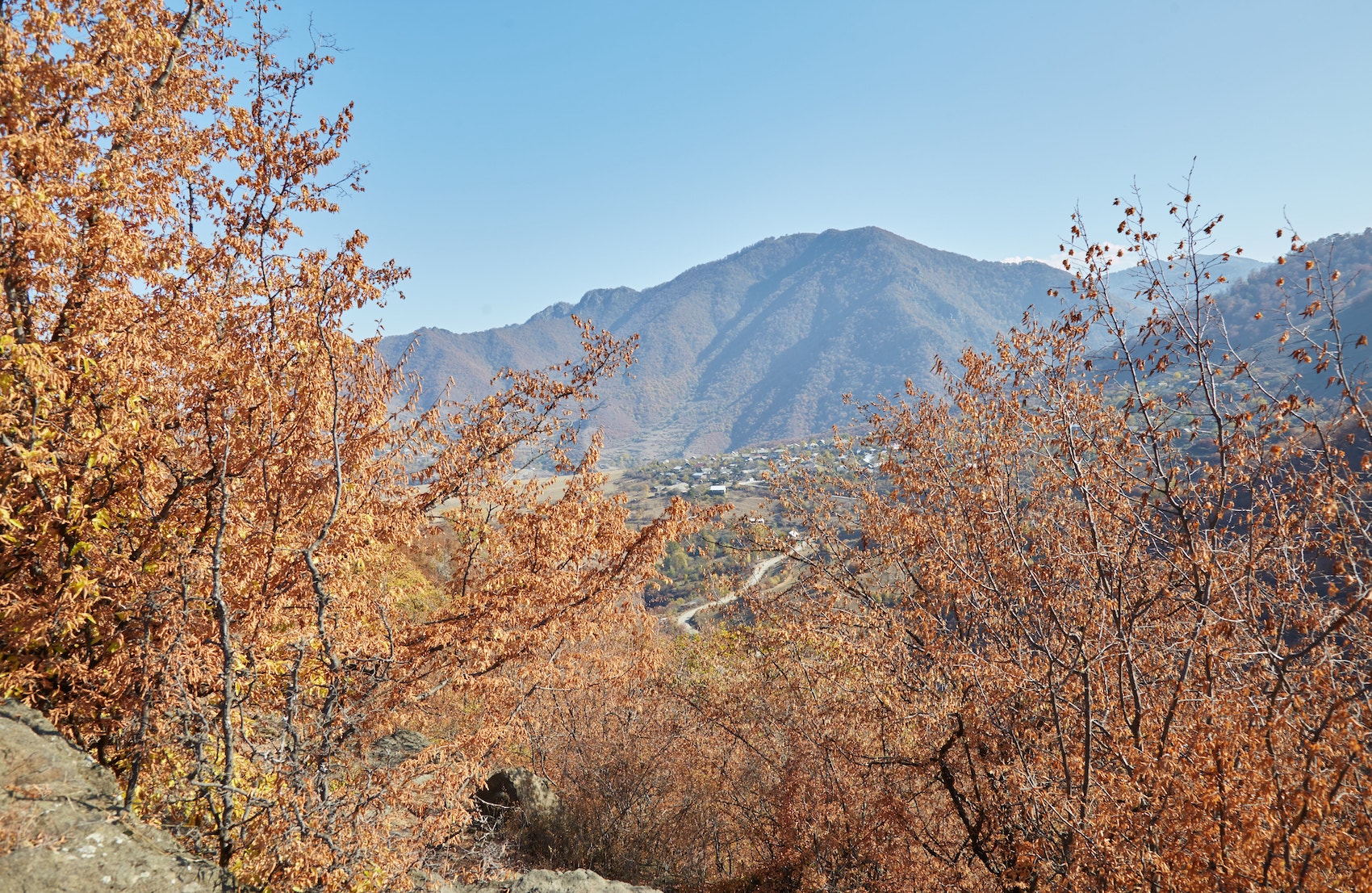
Heading back to the trail, you should see a sign pointing you in the direction of Haghpat Village, as well as Akner Village, which comes first. Entering the forest, you’ll then come across yet another sign that has a somewhat confusing arrow pointed downward and to the left.
Just next to it is an additional trail to the left. And noticing that, I wasn’t sure if the sign was telling me to do a U-turn. The hiking trail outlined on the app indicated a sharp left turn around this point, adding to the confusion. However, DO NOT turn here but WALK STRAIGHT. The sharp left turn comes at a later point.



Eventually you should see another sign across the narrow valley, and that’s where you want to go. Take the sharp turn along the trail there, and keep walking forward up the uphill path. You should now be heading in a northeast direction.

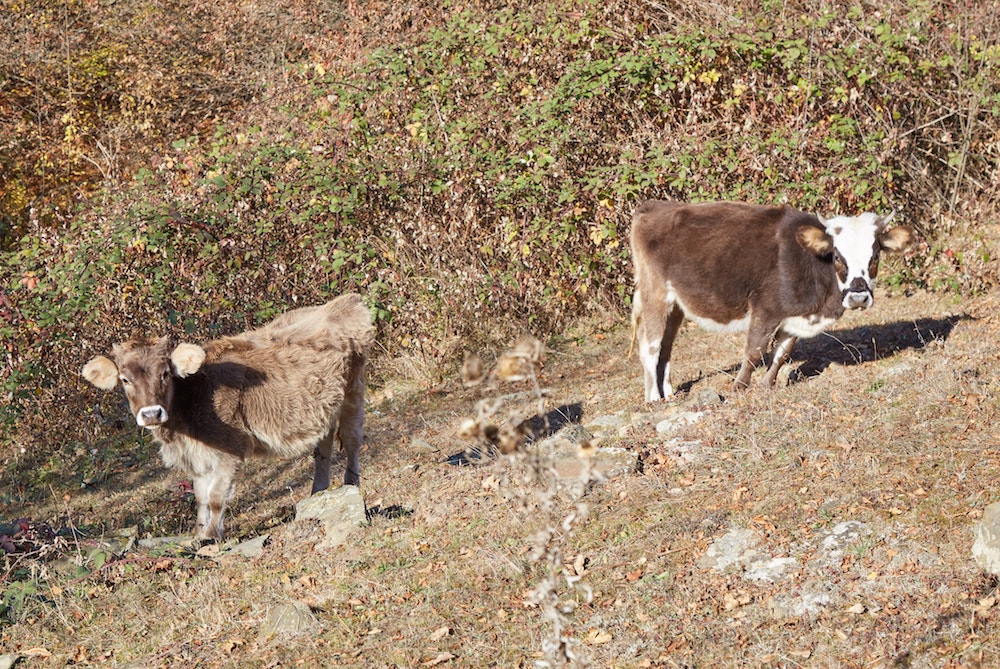
From here, the views in either direction are excellent. Looking back, you’ll see the little church at the end of the ridge, while looking ahead reveals the clear outline of the canyon. Keep walking east and before long, Akner Village should come into view.
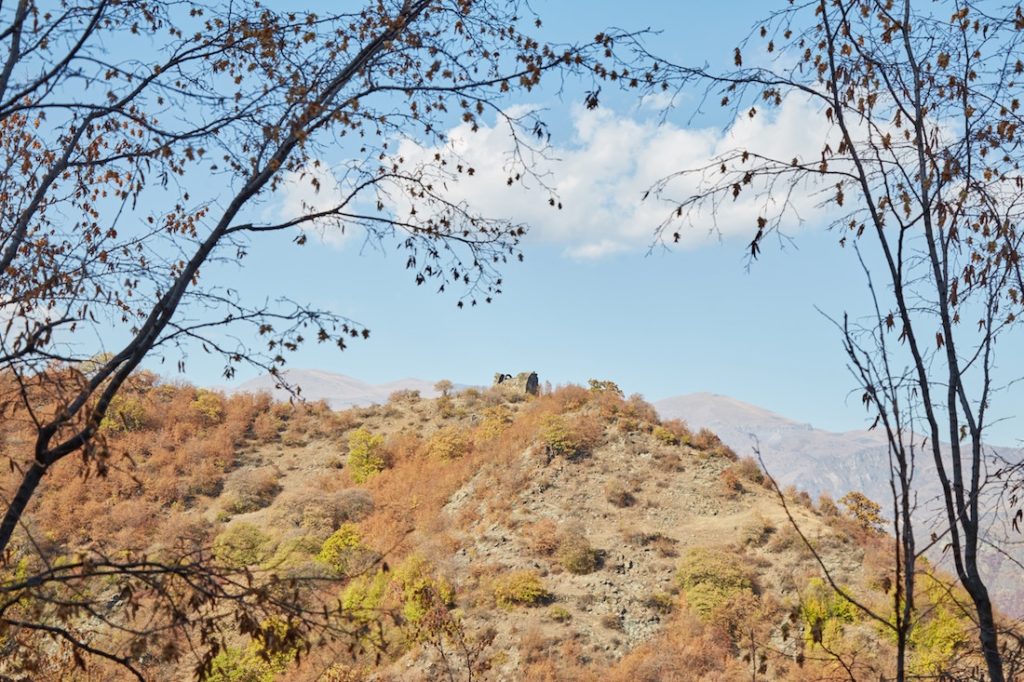

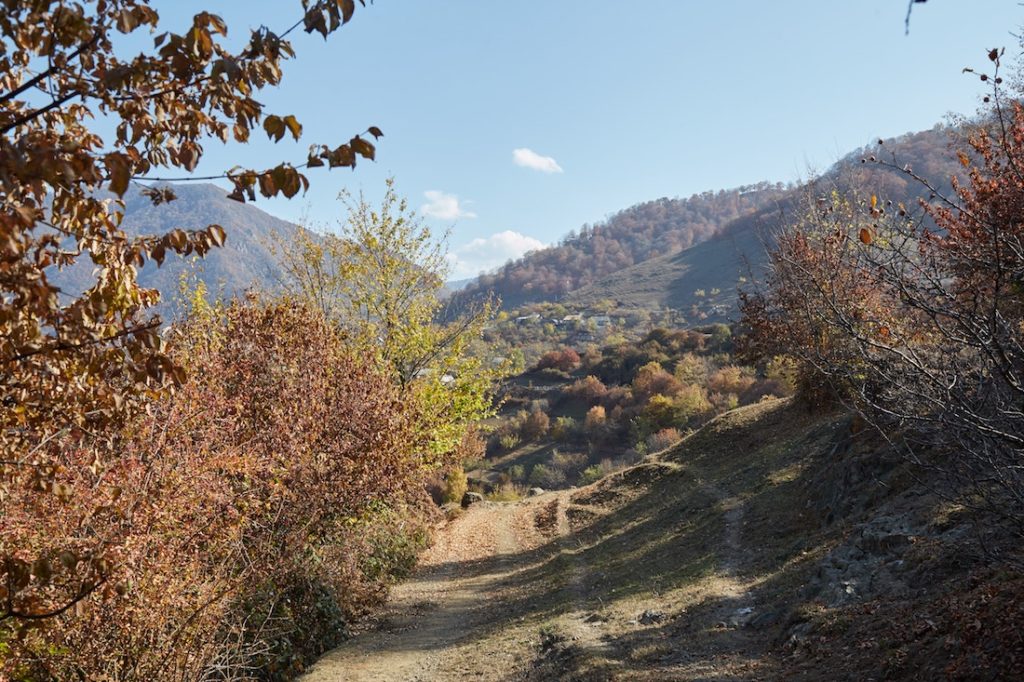

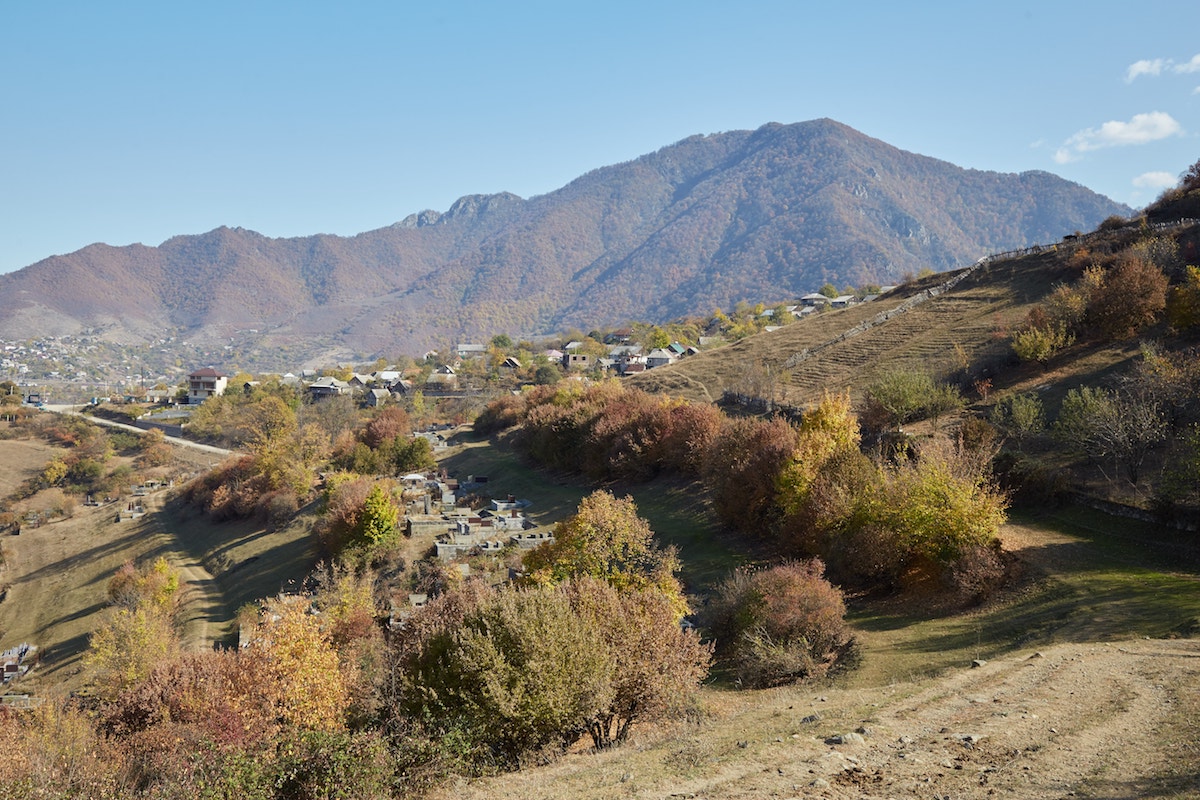
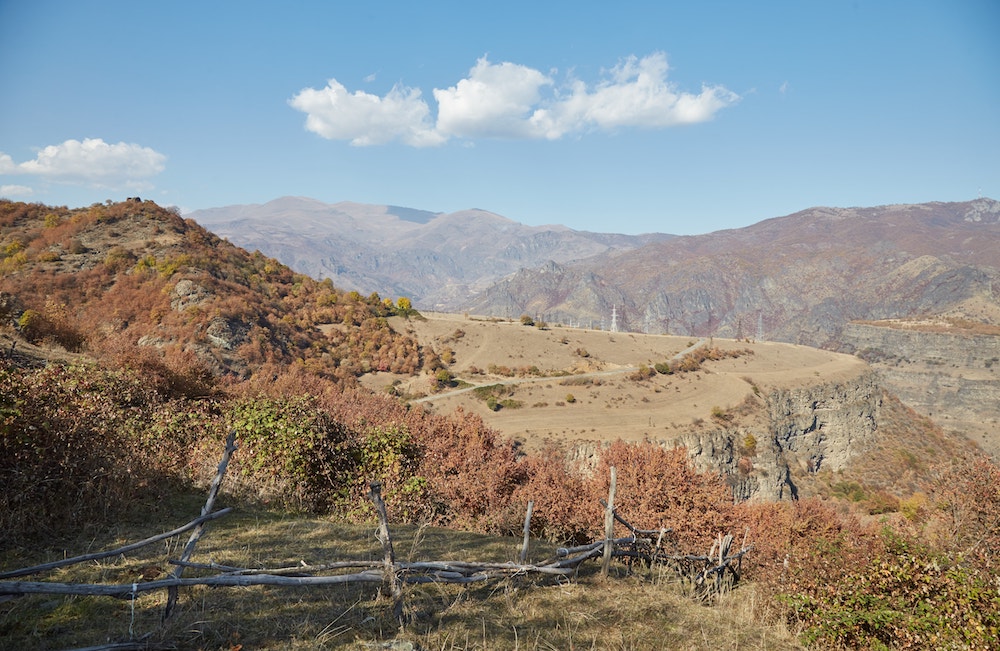

Just before the entrance to the village, the trail will make a sharp right turn immediately followed by a sharp left. But you’ll know you’re in the right place thanks to a conveniently-placed trail marker.
Soon after the trail marker, you’ll be walking through Akner, a sleepy village which isn’t much different from Sanahin.



Eventually, you’ll want to make a right turn, walking straight along the northernmost road of the village. Ten or fifteen minutes later, you’ll reach the very edge, finding yourself face to face with a vast meadow with no distinct trails.



Look closely, however, and you’ll spot a lone trail marker standing in the middle of the field. Walking to it, you should notice a very faint trail taking you across the grassy meadow in a northeast direction. You should also be walking slightly downhill.
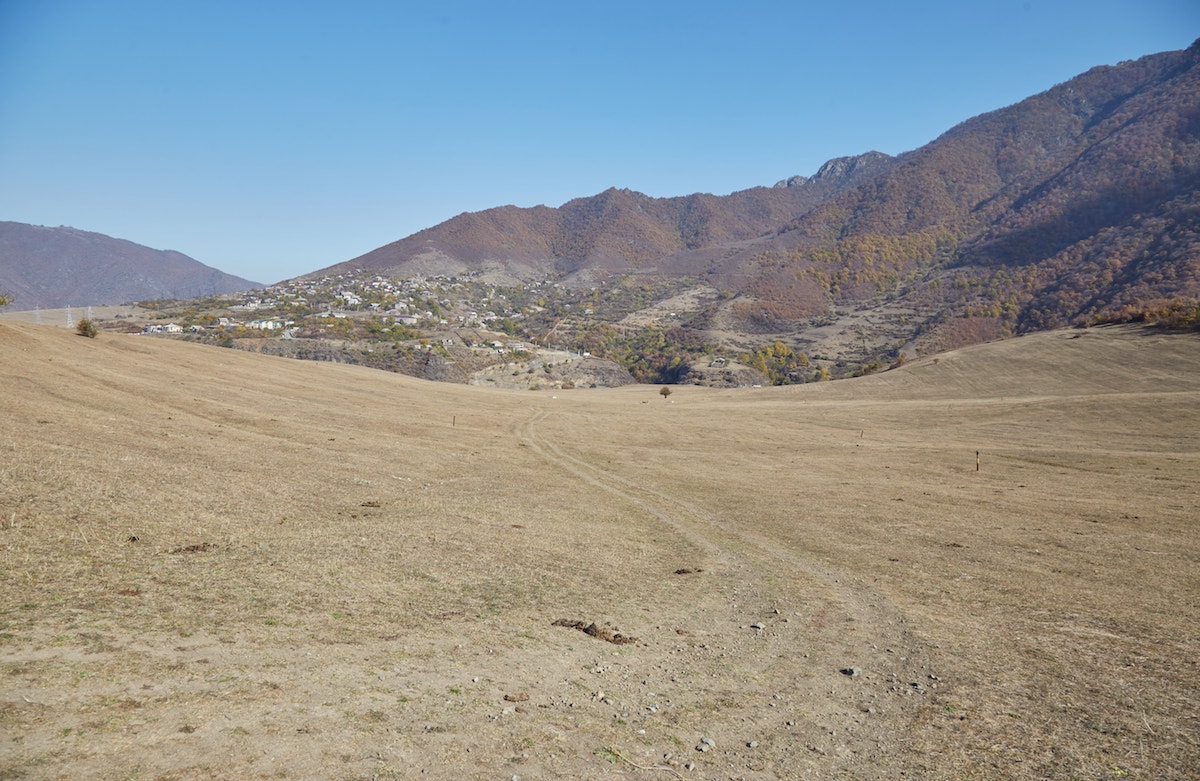
Reaching the opposite end, you’ll encounter a fairly steep downhill trail. Worst of all, at least during the time of my visit, a leaking pipe made the whole thing wet and muddy despite the dry weather.
Trying to avoid stepping in the muddy puddles without slipping turned out to be the most formidable challenge of the day. (I regretted not bringing my hiking boots on this trip!)
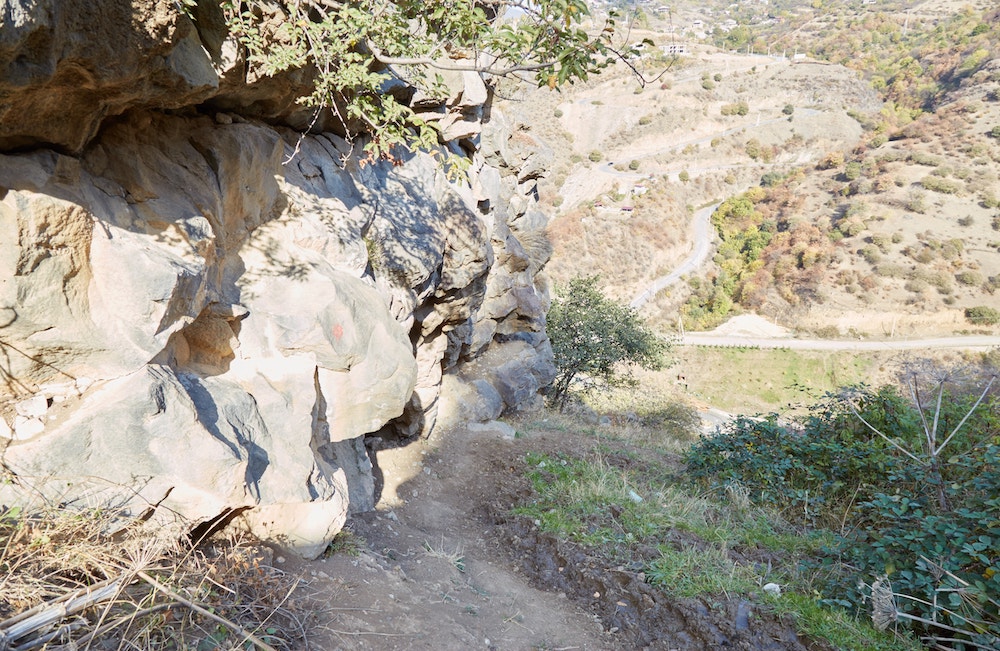
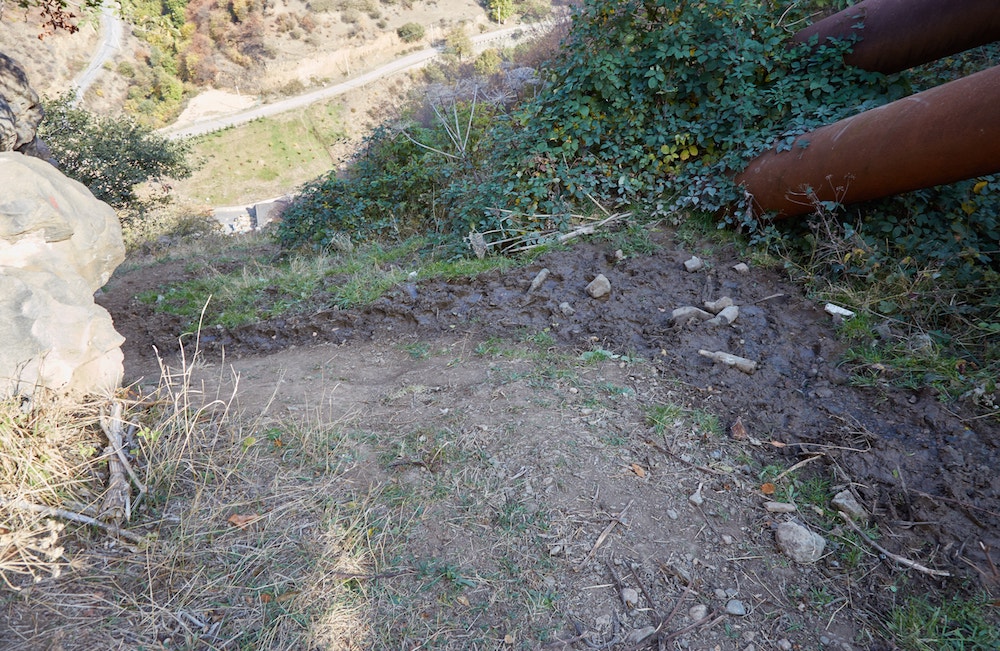


Eventually, I made it past the muddy part, and it was fairly smooth sailing from then on. The path continued downhill, but it was much drier and less slippery than before. And over in the distance, I could even make out Haghpat Monstery, my final destination.

Making it to the bottom, you should see a modern wooden bridge taking you to the other side of the creek. And then it’s a brief uphill climb before reaching the main road. As the arrow suggests, walk straight in the direction of Haghpat Village.
But now it’s time to start thinking about whether you want to go directly to Haghpat or take a detour to Kayan Fortress.

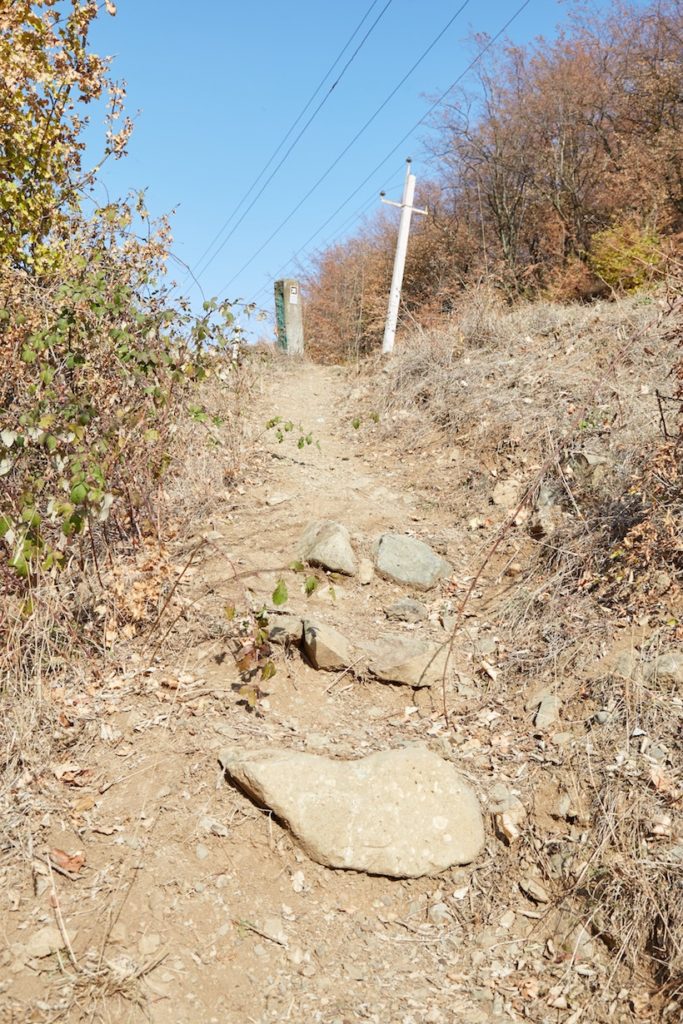
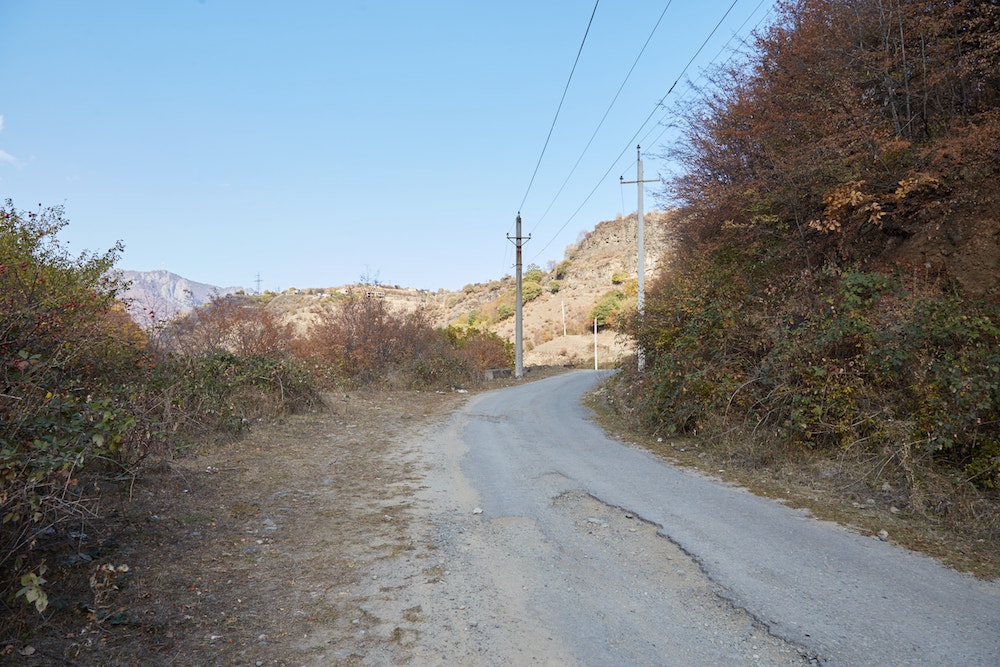
Though I’d read about Kayan Fortress before embarking on the hike, I mistakenly thought that it was a landmark you simply pass by on the main trail. And while it is indeed between Sanahin and Haghpat, it wasn’t until checking the map that I realized what a detour it really was.
A walk there and back will add at least 40 minutes or so to your total trip. Annoyed upon realizing this, I nevertheless decided to hike up there to see what it was all about. And I was ultimately glad that I did.
Kayan Fortress
To get to the fortress, walk north for several minutes along the Armenia-Georgia Highway (H-25). On your right, you’ll pass by a trail marker indicating the start of the path up to Haghpat, but walk past it for now.
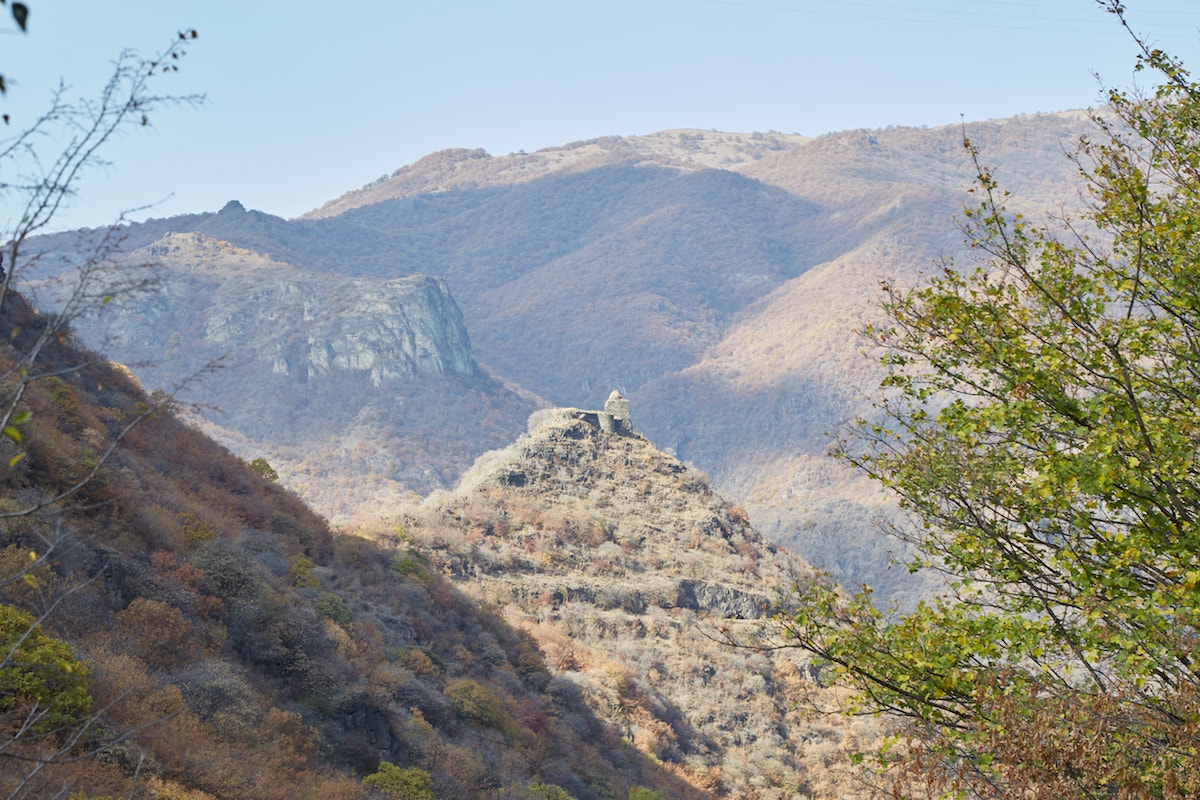
You’ll pass a point where the highway branches in two, with the road to the right winding up the mountain. Walk past it, but shortly afterward, look to your left. You should see a driveway with a green gate in front of it.
And just to the right/outside of it, you’ll find the dirt trail which will take you up to Kayan Fortress.

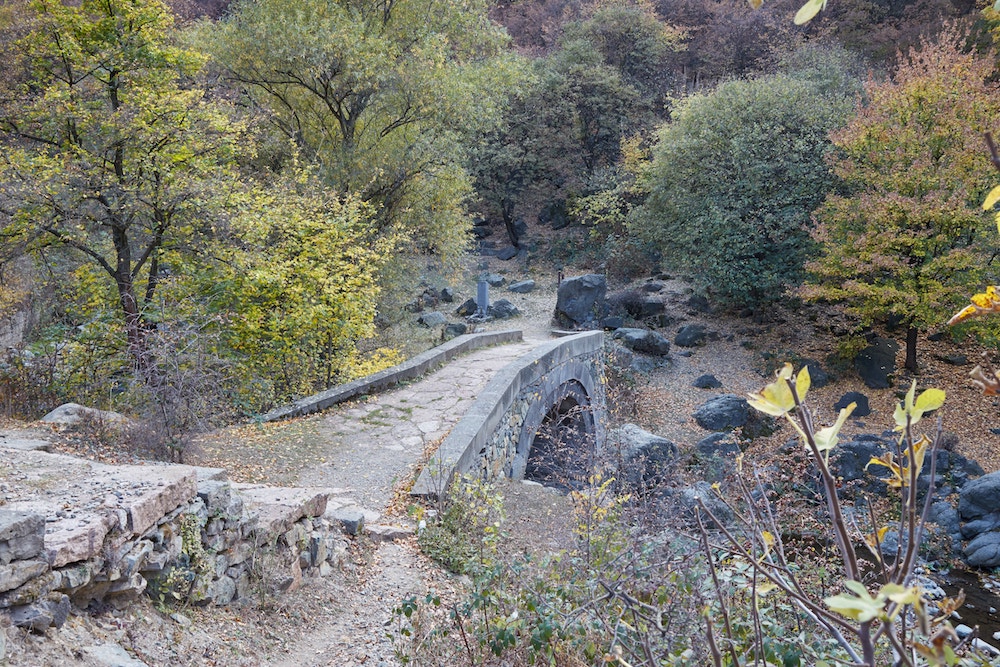
Turn right to walk over the stone bridge, and then make a right again (north) on the hiking trail. From here on, it’s a pretty straightforward, uphill climb to the fortress.
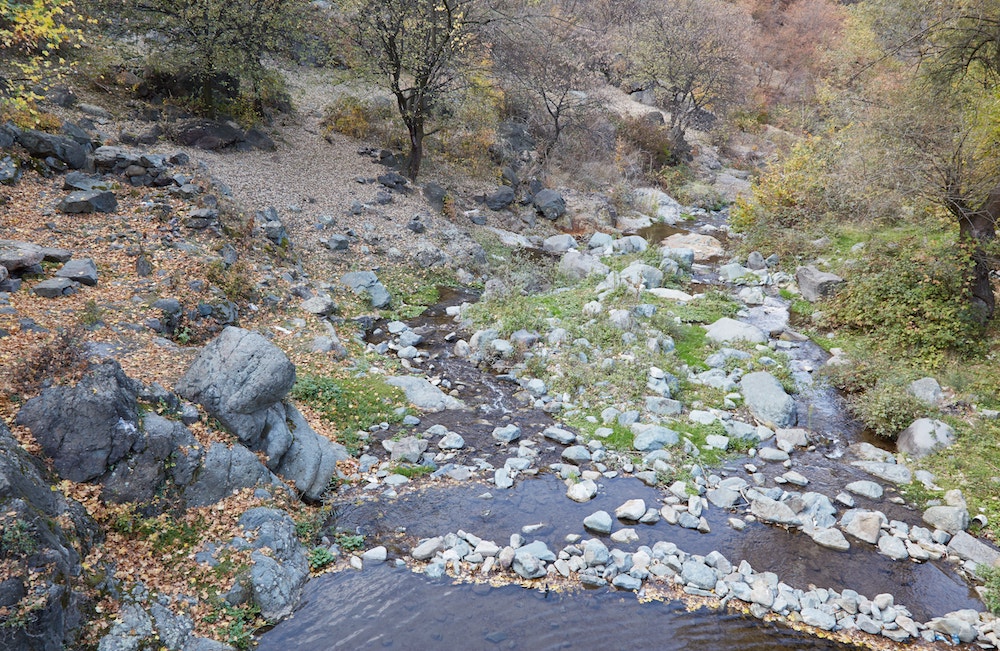


Be sure to look back to take in the views of the valley. The scenery will only continue to get more impressive as you make your way up the hill. Along the way, you’ll also pass by an interesting little cave on your lefthand side.


And before very long, you’ll spot Kayan Fortress up ahead through the trees. The trail will become less obvious as the path becomes increasingly rocky.
You can choose to get to the top from either the right or left side. While the right side is considerably steeper, this is what I recommend. On the way back down, I took the opposite side and had to traverse through numerous thorny bushes.
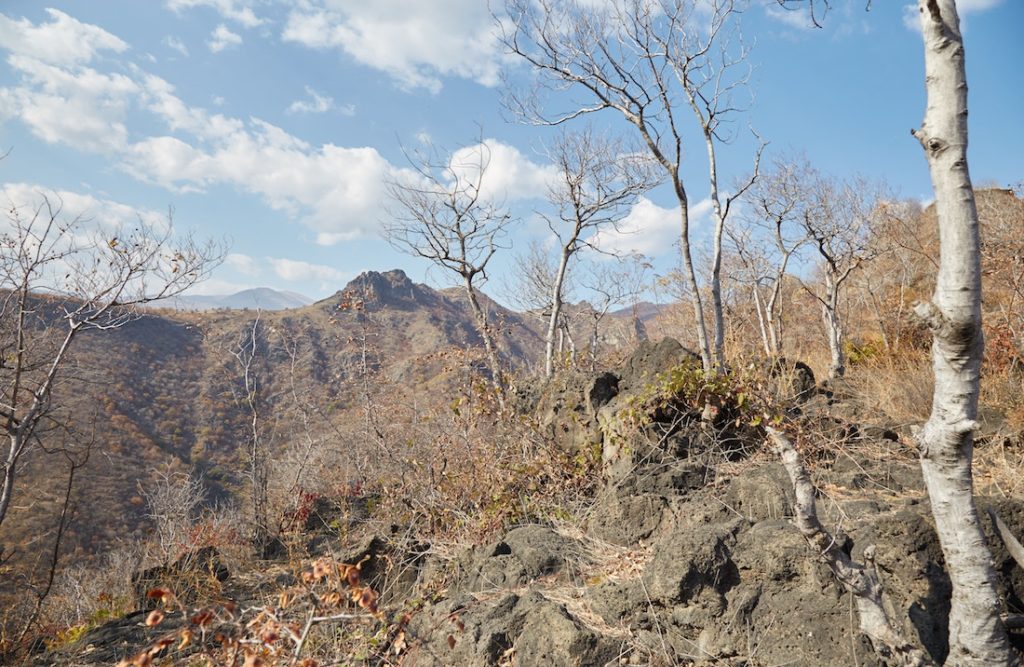
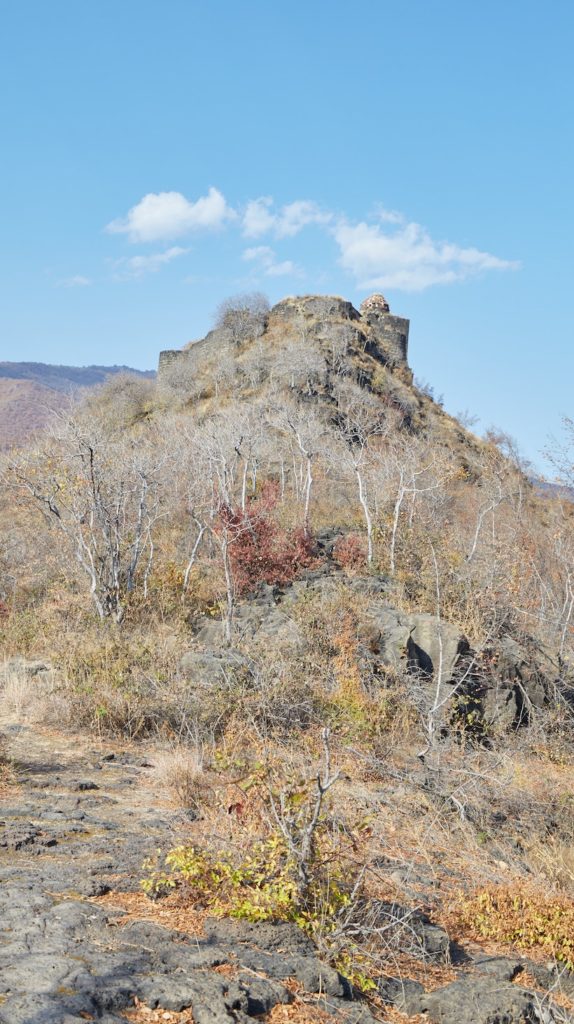
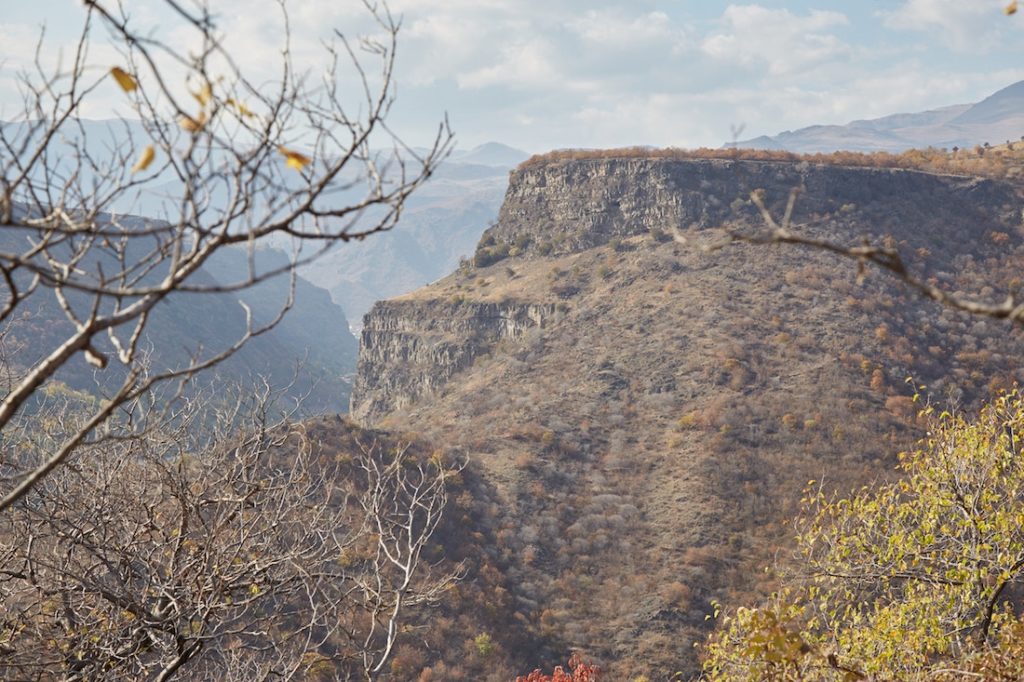
But what’s the story behind this fortress, and who built it? According to legend, it was built by the Bishop of Haghpat Monastery in 1233.
Interestingly, he was the nephew of Ivane Zakarian, the general who converted from the Armenian Apostolic Church to Georgian Orthodoxy, converting a few local monasteries along with him.
The fortress didn’t last long, as it was destroyed by the Mongols only five years later in 1238. So while it didn’t perform its function very well, the builders at least deserve credit for correctly predicting the invasion!
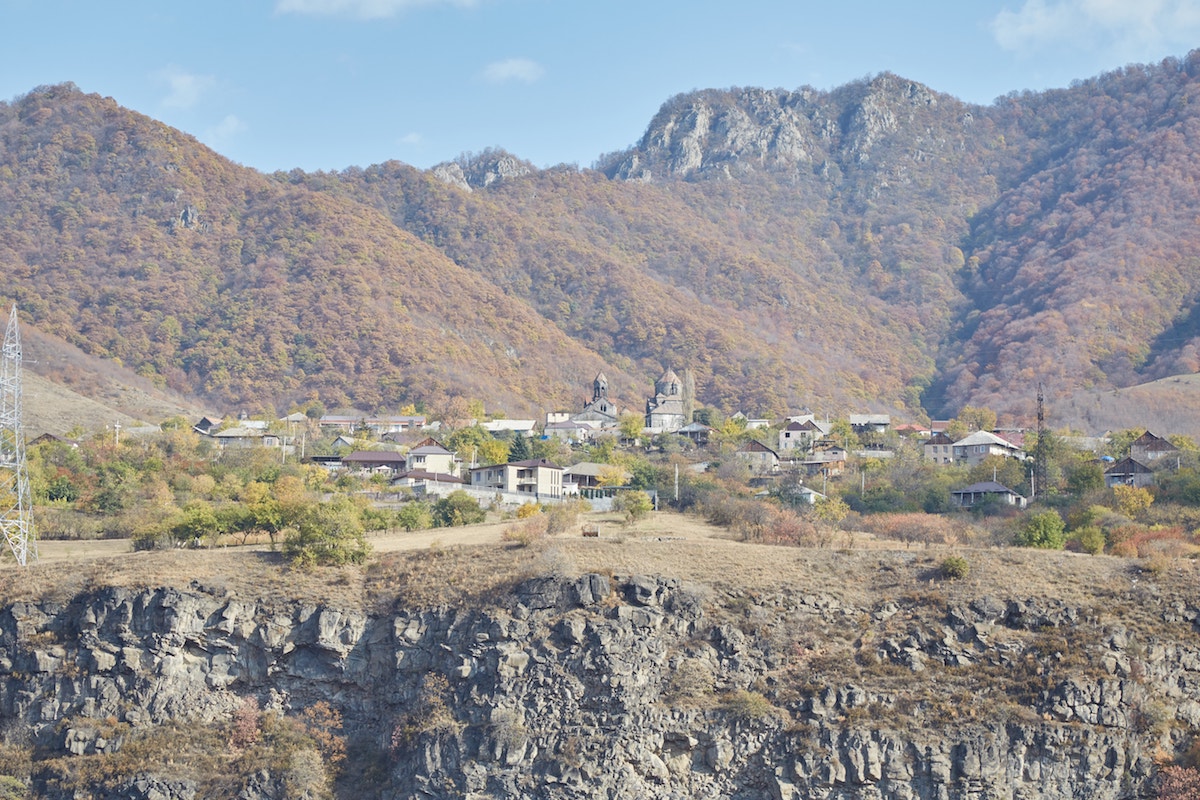
I climbed up the side of the remaining black tufa walls. At the top, I found a small church like the one I encountered earlier in the hike.
The views from the ruined fortress are spectacular, and it’s arguably the best scenery you’ll see all day. As expected by now, I was the only person at the top. I spent awhile appreciating the views before eventually making the return trip back to the road.
Arriving at the highway, I headed right (south) to find the trail up to Haghpat.

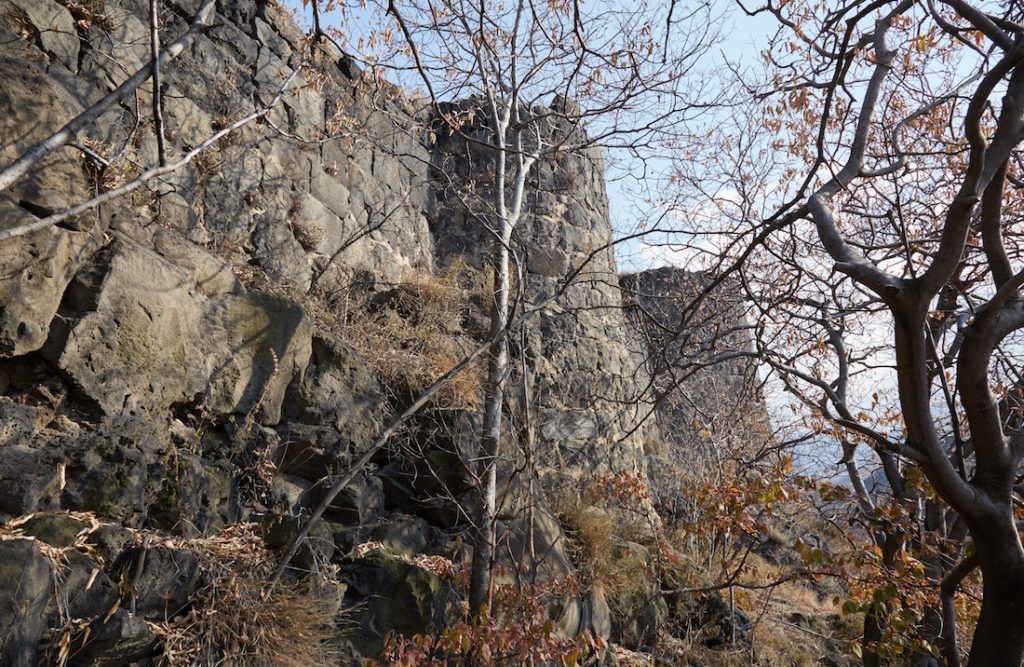
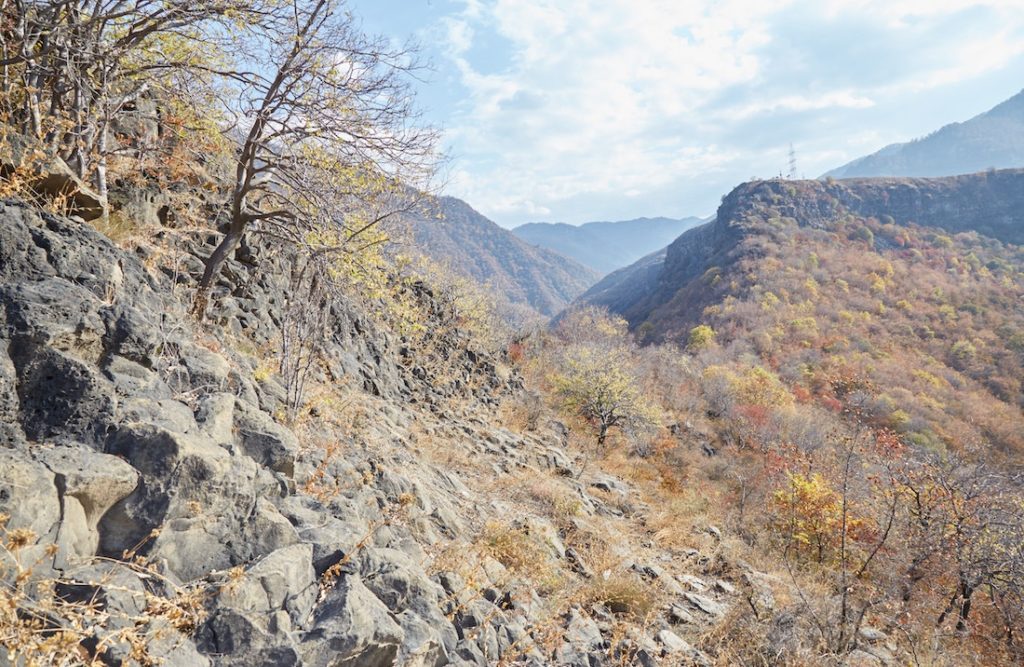
Haghpat Monastery
By this point I was feeling pretty tired. I’d already been on my feet longer than expected, and somewhat regretted taking things so slowly in the morning.
It was now already around 15:00. Not only did I still have to hike up to Haghpat, but I needed to make sure to finish in time to catch the 17:00 minibus back to Alaverdi.
Fortunately, this final l stretch of the hike was relatively quick and easy. And with the monastery visible in the distance, there was no uncertainty about where to go.
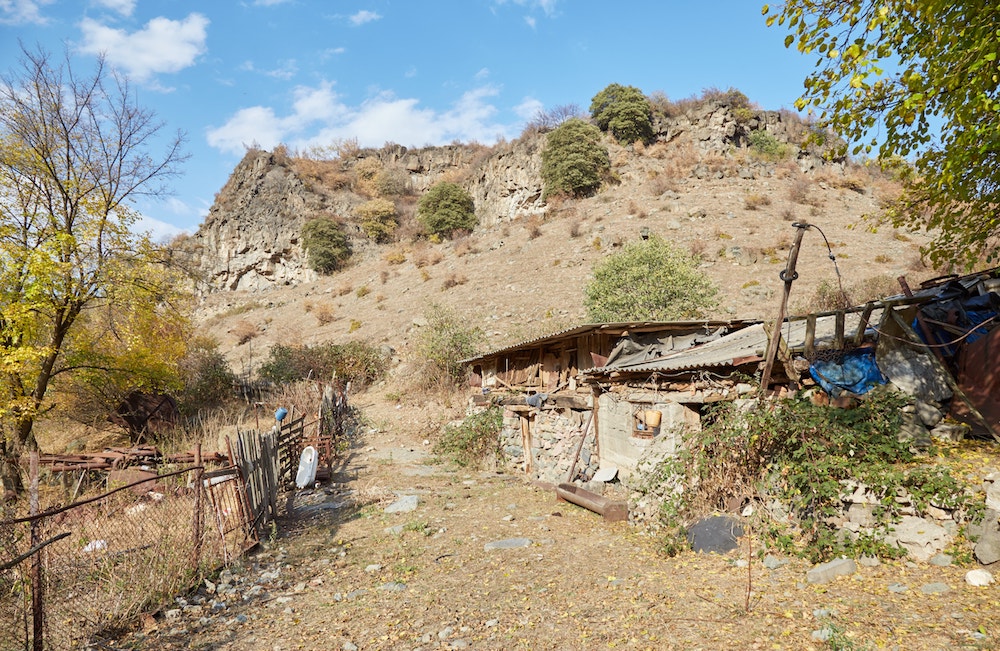
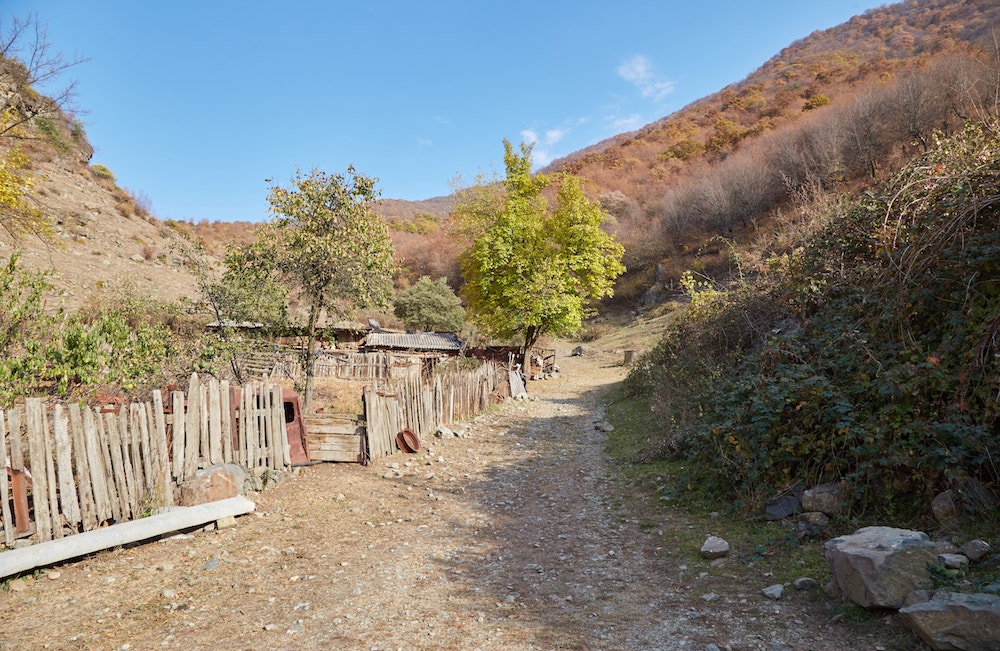
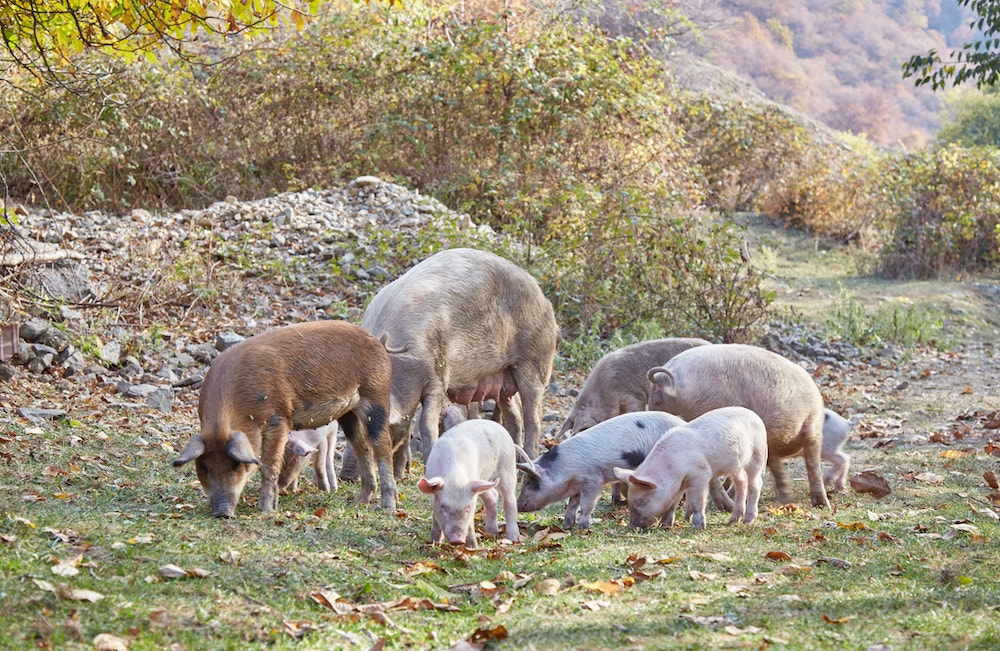
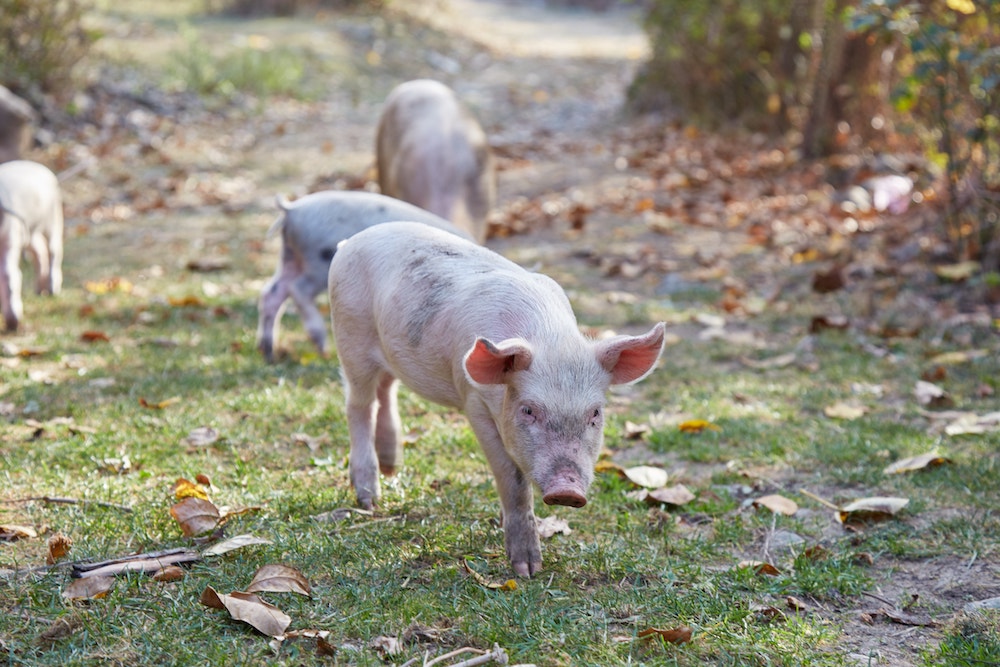
Passing by a family of pigs, and then through the hilly outskirts of Haghpat Village, I arrived at the monastery in just about 20 or 30 minutes. There were a few women outside selling snacks and souvenirs who welcomed me with a smile. Inside, the monastery complex was virtually empty.



At first glance, it was clear that Haghpat Monastery is larger than its neighbor Sanahin. In fact, Haghpat even translates to ‘large wall.’ While those at Sanahin liked to brag about being the slightly older of the two, Haghpat made sure to boast about its size.


One of the first structures I walked in was St. Grigor Church, which is quite similar to the building of the same name at Sanahin. The church is said to date back to the early 11th century.
Next, I walked in between a unique arch-covered area connecting the Scriptorium and the main church. The hallway is filled with khachkar cross-stones while the floor is jam-packed with graves.
The exquisite ‘Redeemer’ cross-stone, which stands on the pedestal, was carved in 1273. It depicts the twelve apostles surrounding Jesus during the crucifixion.


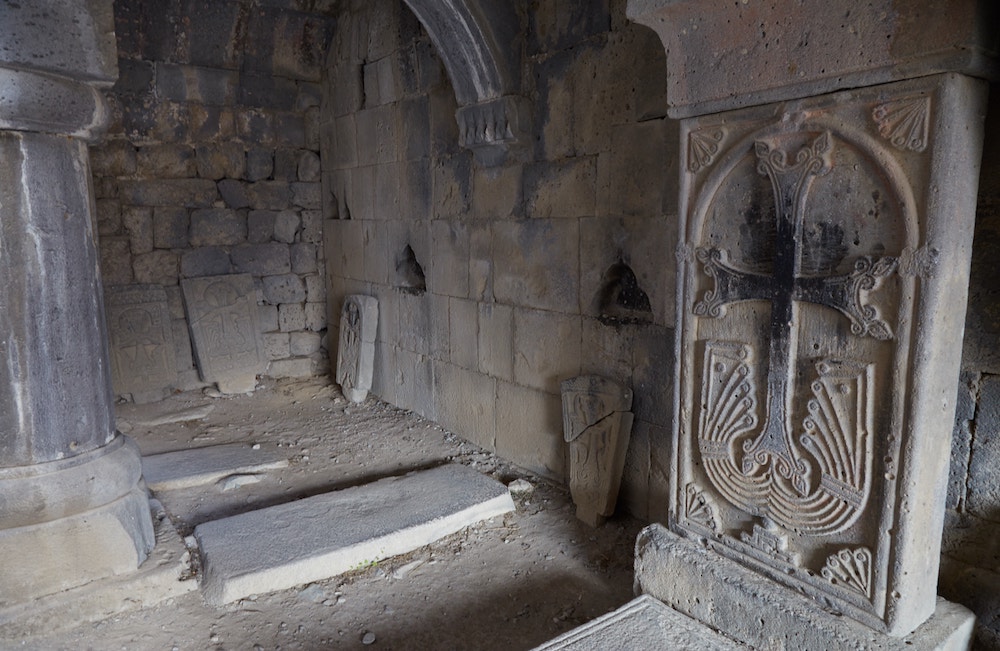

The largest building of the entire complex is Abbot Hamazasp which was constructed in 1257. It’s a large squared hall supported by four large columns, while the Scriptorium is attached to its southern end. This was yet another structure completely void of furniture or decorations.
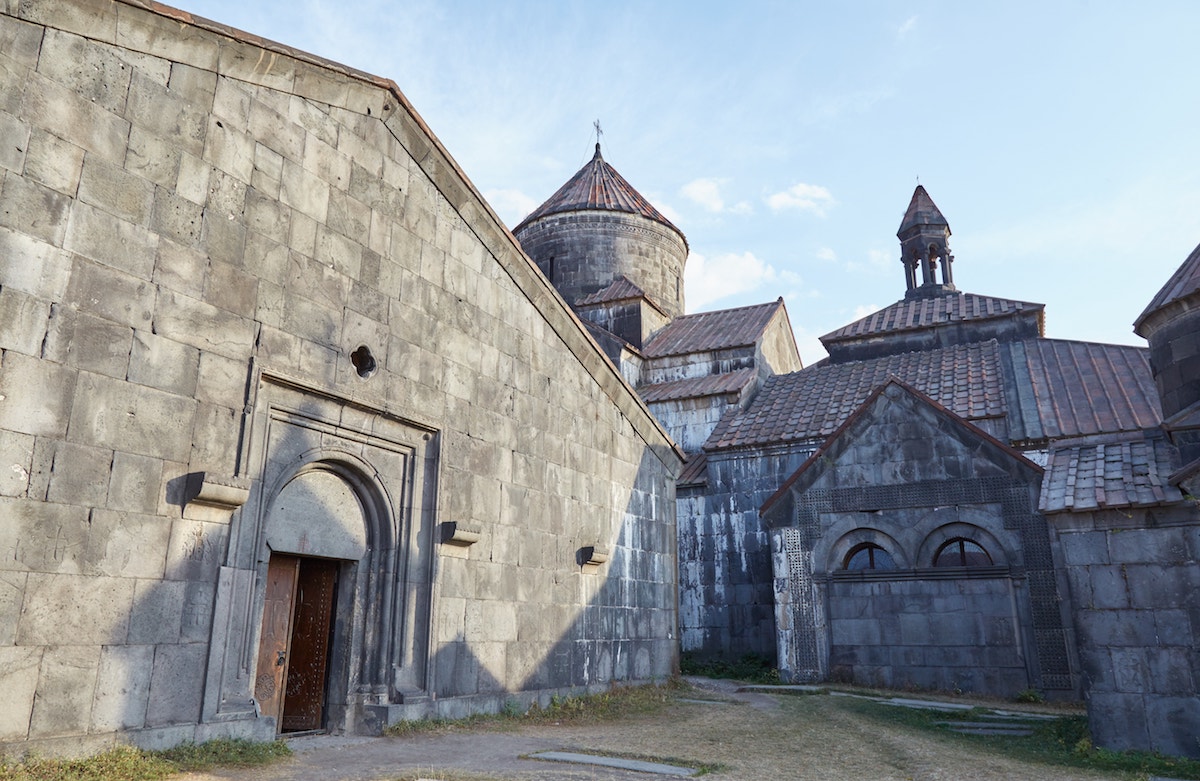
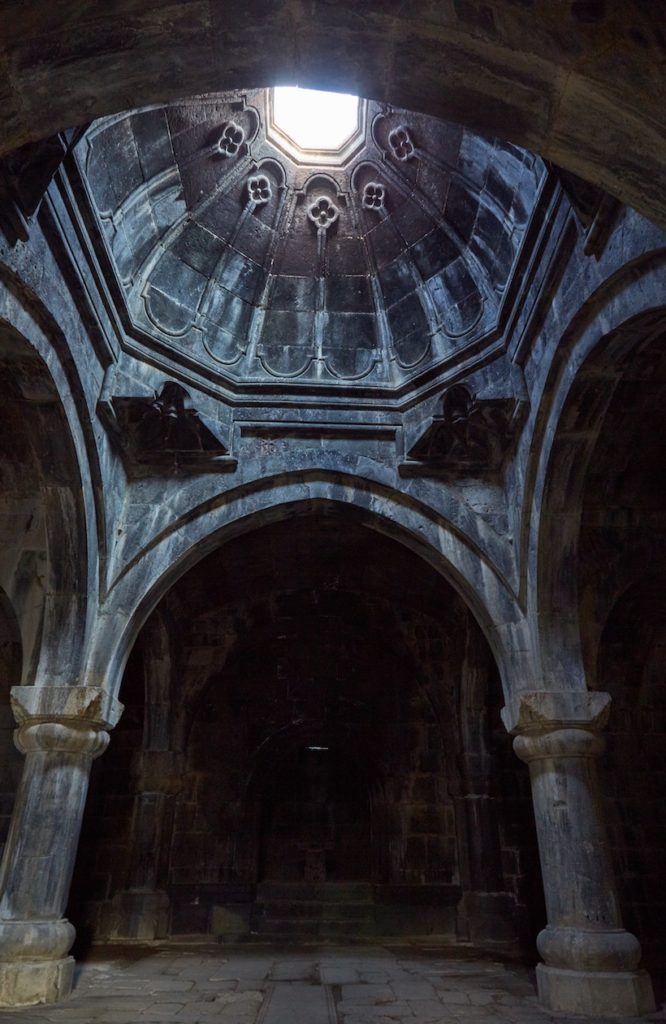
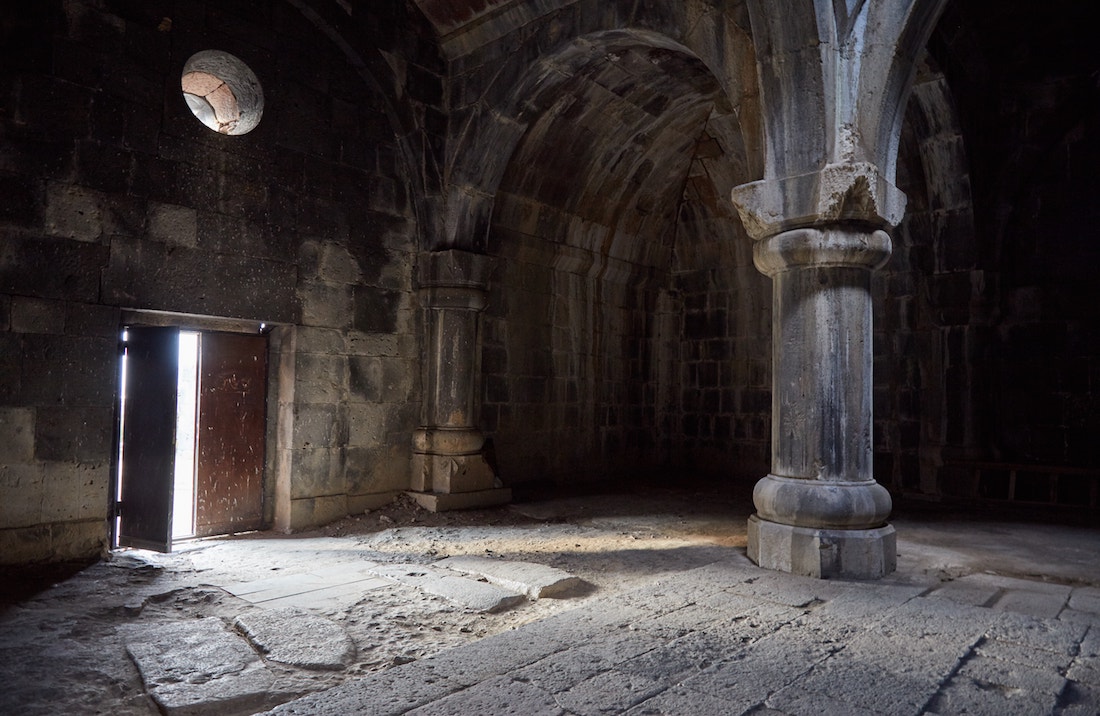
Elsewhere aorund the complex, I came across some interesting mausoleums topped with intricately carved khachkars. The narrow building atop the slope, meanwhile, was once the belfry.


The main church of Haghpat Monastery is called St. Nshan, which I saved for last. The gavit alone is huge, and is said to contain the remains of a former king. And the lit candles reveal that this is the only part of the church to remain active.
Notably, the church, which was constructed between 976 and 991, was designed by an architect named Trdat. He was also responsible for the Cathedral of Ani and Church of Gagik I at the former Armenian capital of Ani. Later on, he’d even repair the dome of the Hagia Sophia in Constantinople (Istanbul).


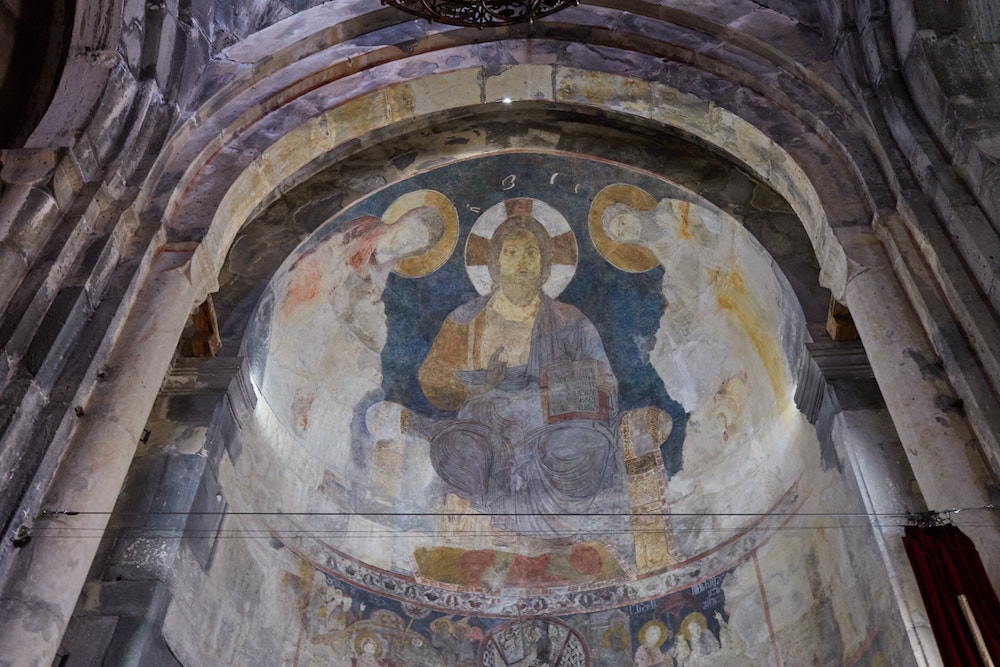

The main church is a typical domed cross-church, much like those at Sanahin. But what sets this one apart are its beautiful frescoes, which have apparently been recently restored. The main scene at the top depicts Jesus enthroned, while the smaller scenes below depict his birth and baptism.

Luckily, I managed to see everything before the final bus back to Alaverdi. It turned out to be a much longer and eventful day than I’d anticipated.
While the monasteries themselves aren’t Armenia’s very best, the hike in between them makes the excursion to Alaverdi well worth it.
Additional Info
From Yerevan, it’s possible to take a marshrutka to Alaverdi from the Central Bus Station (Kilikia). The process is anything but straightforward, however.
Researching online, I read on a few web sites that there were no morning buses at all. Meanwhile, on others, I read about a 9 or 9:30 am bus, and that the price would be 1700 AMD. And I also read that there were shared taxis departing from the station for 3000 AMD as well.
With so much conflicting information, I asked my hotel in Yerevan to double check for me. And after checking a supposedly up-to-date Armenian web site, the owner confirmed that yes, there’d be a bus departing around 9am.
Despite being the main bus terminal of the capital city, Kilikia completely lacks English signage. Getting there before 9am, I managed to find the proper waiting area by checking the Armenian spelling on my phone. But no bus ever showed up.
Note that most buses headed to Alaverdi end up going all the way to Tbilisi, Georgia. And luckily, I did end up finding a Tbilisi-bound minibus departing at 10am – a time which never appeared in any of my research. And the cost was 3000 AMD, more than I was expecting. But I was just happy to have a ride.
There were a few other English-speaking tourists on my minibus who were equally bewildered, but we all had a good laugh about it. One of them said he managed to buy an advanced ticket the day before, but the time written on it was 10:30. Had he not arrived extra early, he would’ve missed it!
Getting to Alaverdi from Yerevan seems to mostly rely on luck rather than planning.
But that’s not where the confusion ended. Though our driver confirmed with me more than once that I was indeed headed for Alaverdi and not Tbilisi, he later ended up forgetting and drove way past town! He spoke no English, so I had to shout in horribly broken Russian from the back of the bus, reminding him to stop for me.
He then turned around and dropped me off in the center of town, though the other Armenian passengers were grumbling throughout the whole backward journey.
Note that some people also visit the monasteries featured above, in addition to Sanahin and Haghpat, with the city of Vanadzor as their base. Vanadzor is the capital of Lori Province and while I didn’t go there, I heard good things about it from another traveler. But I thought Alaverdi was beautiful and certainly don’t regret staying there. Also, I could simply walk to the Sanahin Monastery from my hotel.
You can also get to Alaverdi from Tbilisi by hiring a marshrutka or shared taxi bound for Yerevan. Expect to pay the full fare even if you get off early. Supposedly, the night train even stops at Alaverdi, but just for a minute. Learn more about Tbilisi-Yerevan transport at the end of this article.
I stayed for two nights in a private room at a small hotel called Mini House, which I’d highly recommend for budget travelers.
It’s important to understand that Alaverdi is really two towns in one. There’s the lower part and the upper part (officially known as Sarahart) that’s situated atop the canyon. Mini House is on the upper part and it’s within walking distance from the Mikoyan Brothers Museum and Sanahin Monastery. You can then easily start the hike to Haghpat Monastery after visiting Sanahin.
It’s impossible to walk in between lower and upper Alaverdi. One option is to take a marshrutka for a couple hundred dram. I tried it once and all the seats were full. I needed to stand hunched over, holding on for dear life as the driver speedily zigzagged up the mountain.
Much more comfortable is taking a taxi. The standard rate is 1,000 AMD one-way, though perhaps you can haggle it down a little bit. There’s also a rickety old funicular connecting the two levels, but it was out of service during my visit.
As far as getting around to the main monasteries, there are public buses to some of them. However, I would recommend doing what I did: First, spend one day with a private driver visiting Akhtala, Odzun and other monasteries. (I paid around 10,000 AMD for the excursion.)
Then the next day, you can get from Sanahin to Haghpat Monastery on foot. The last public marshrutka leaves from Haghpat Monastery to central Alaverdi at 17:00.
As for finding a taxi driver, it’s likely one will find you upon arrival in Alaverdi. Something I’ve learned in the Caucasus is that in smaller cities, it’s best to be polite and listen to what people who approach you in English have to say.
They’re not like the typical annoying touts you might encounter in other countries. On the contrary, they may be one of the only English speakers in town who could potentially be of great help to you. Even if you need time to relax at your hotel before agreeing on a deal, at least get their contact info so you can get in touch later.

Pin It!

